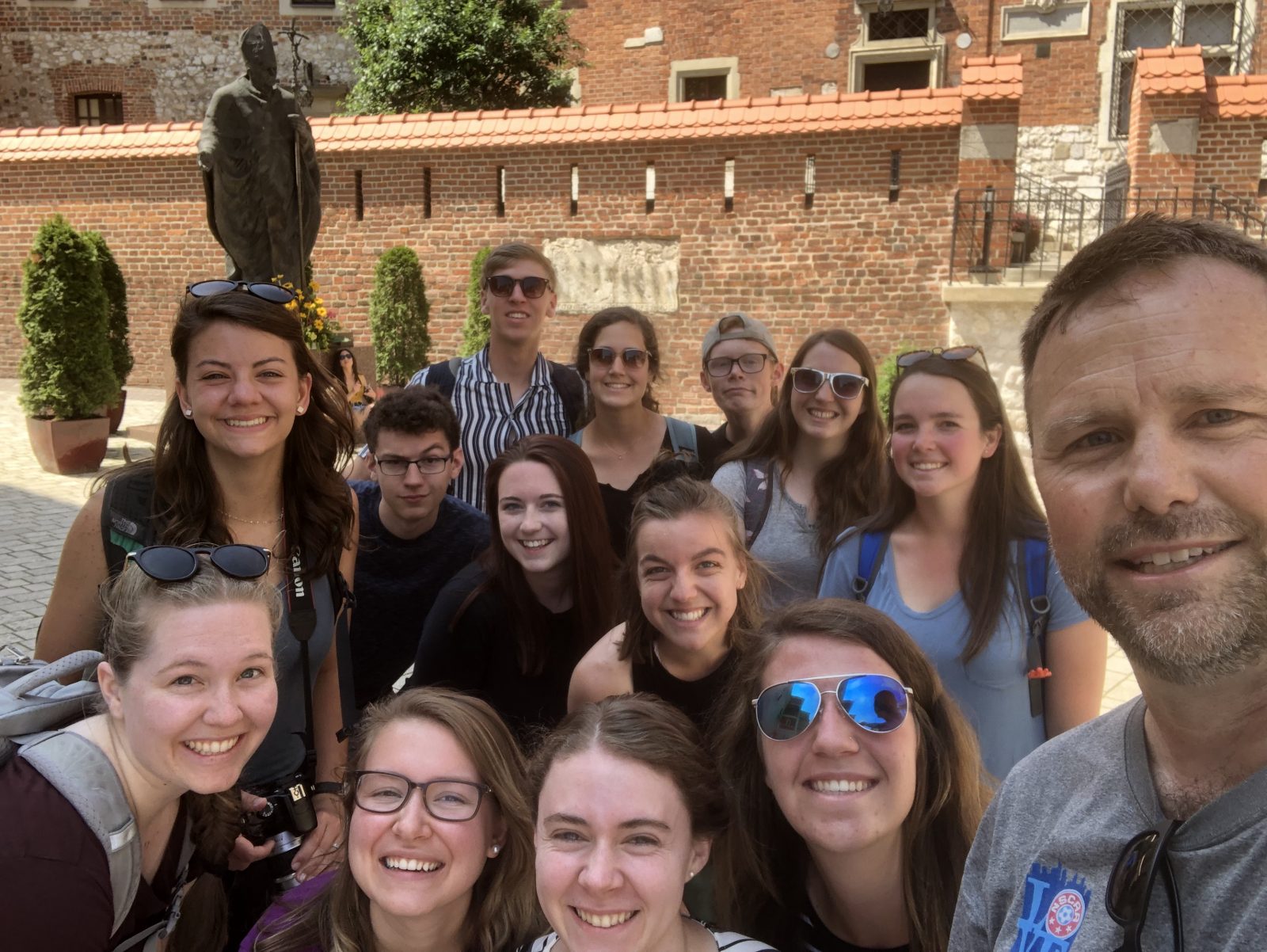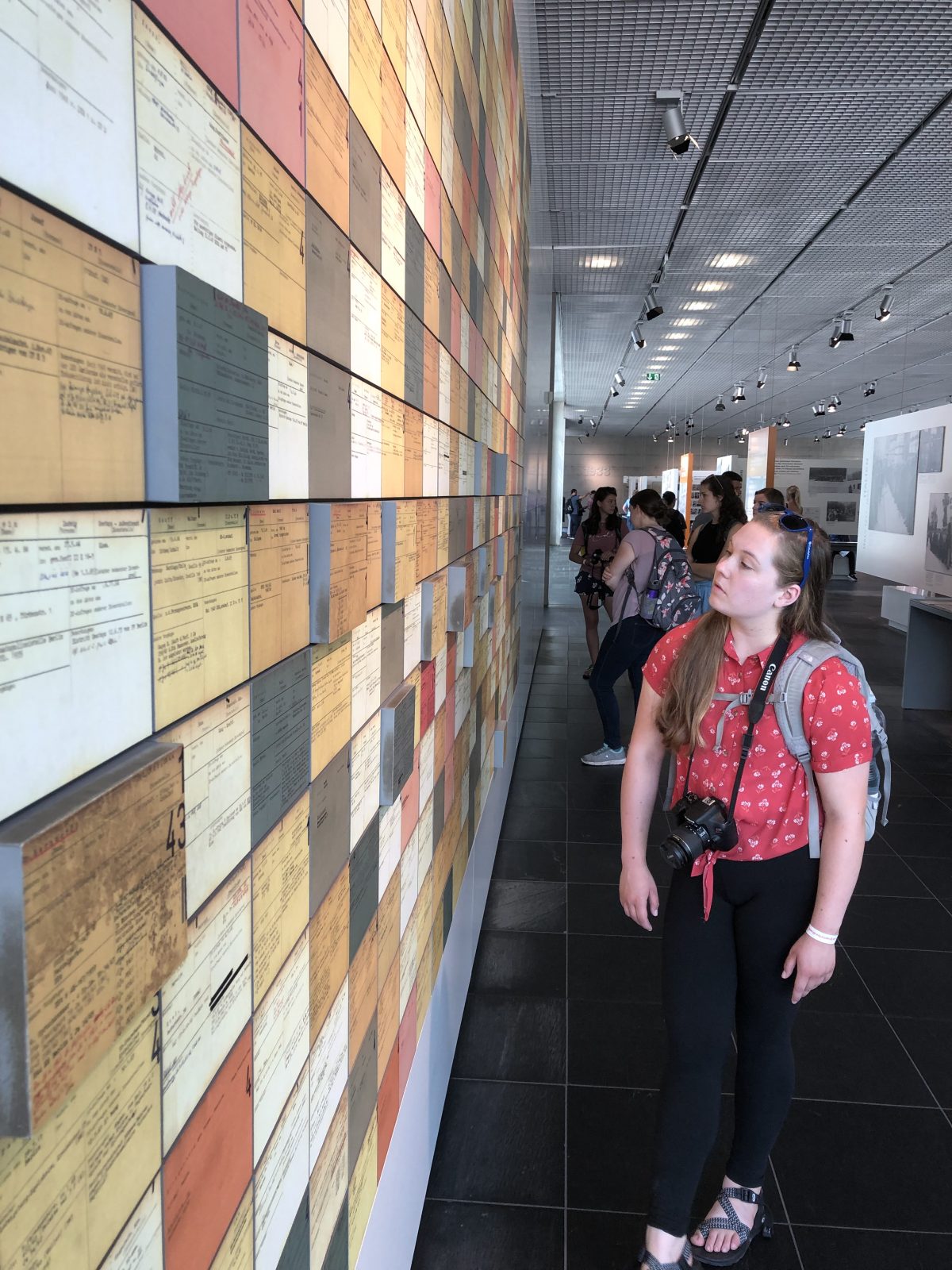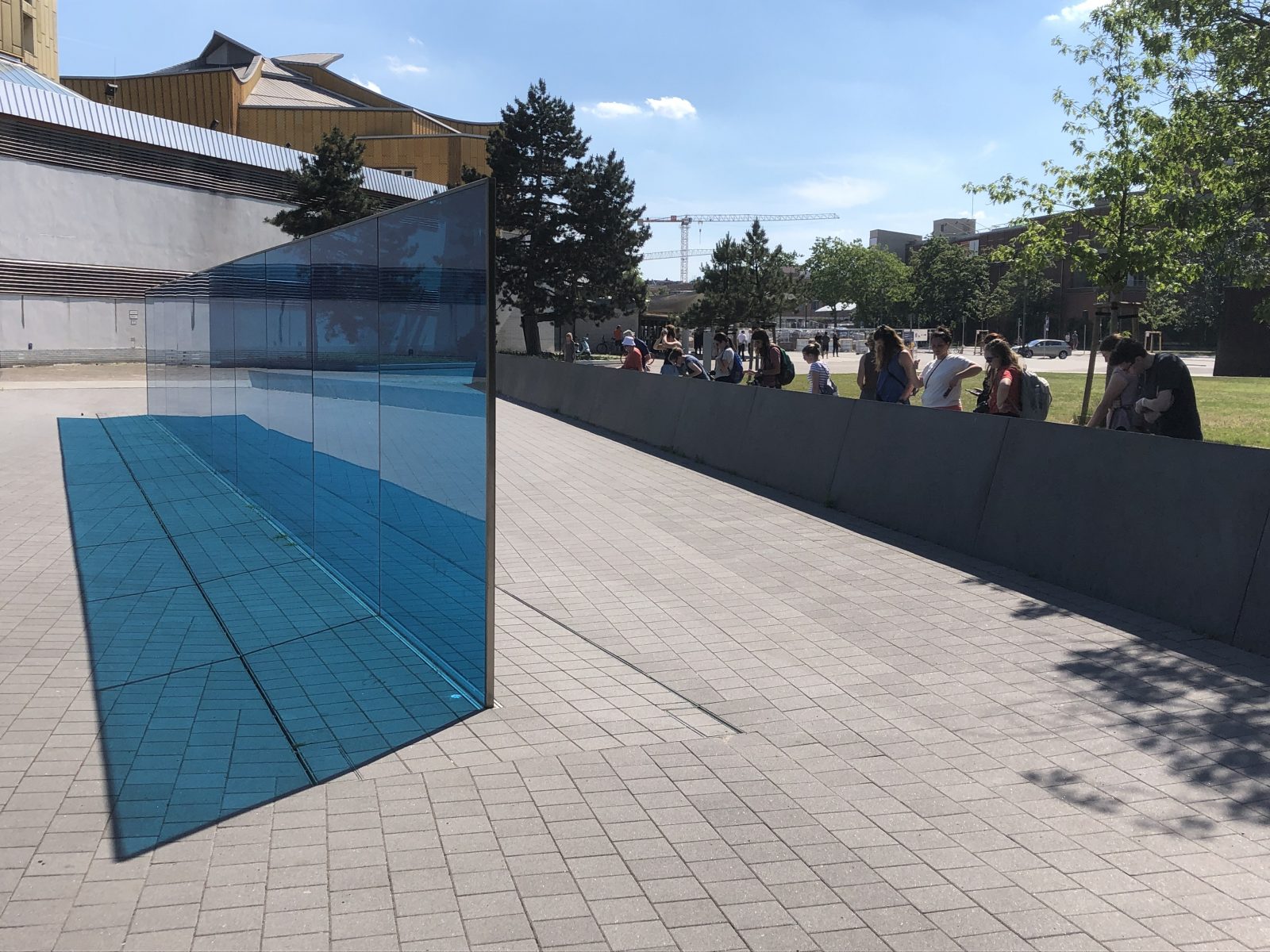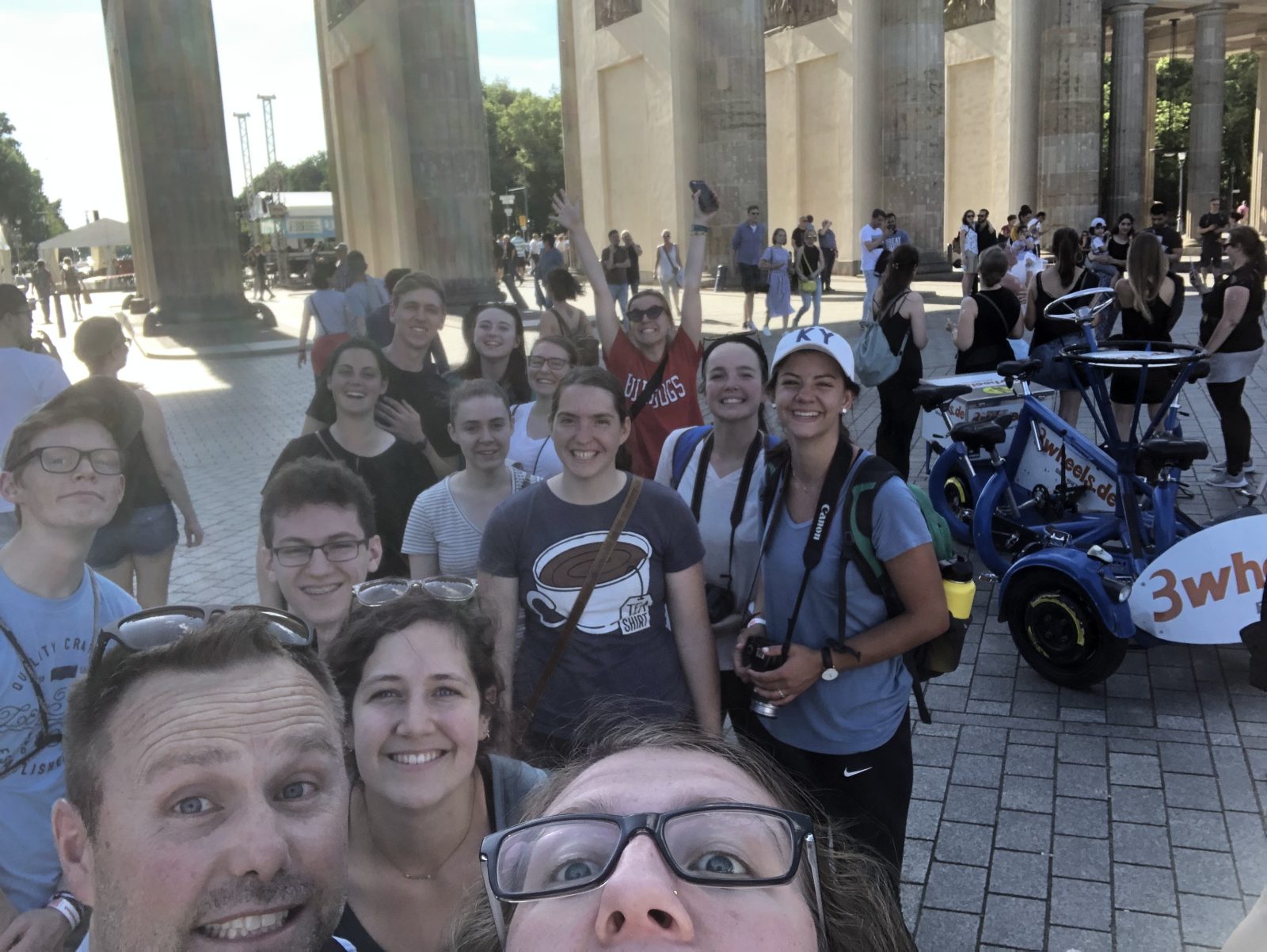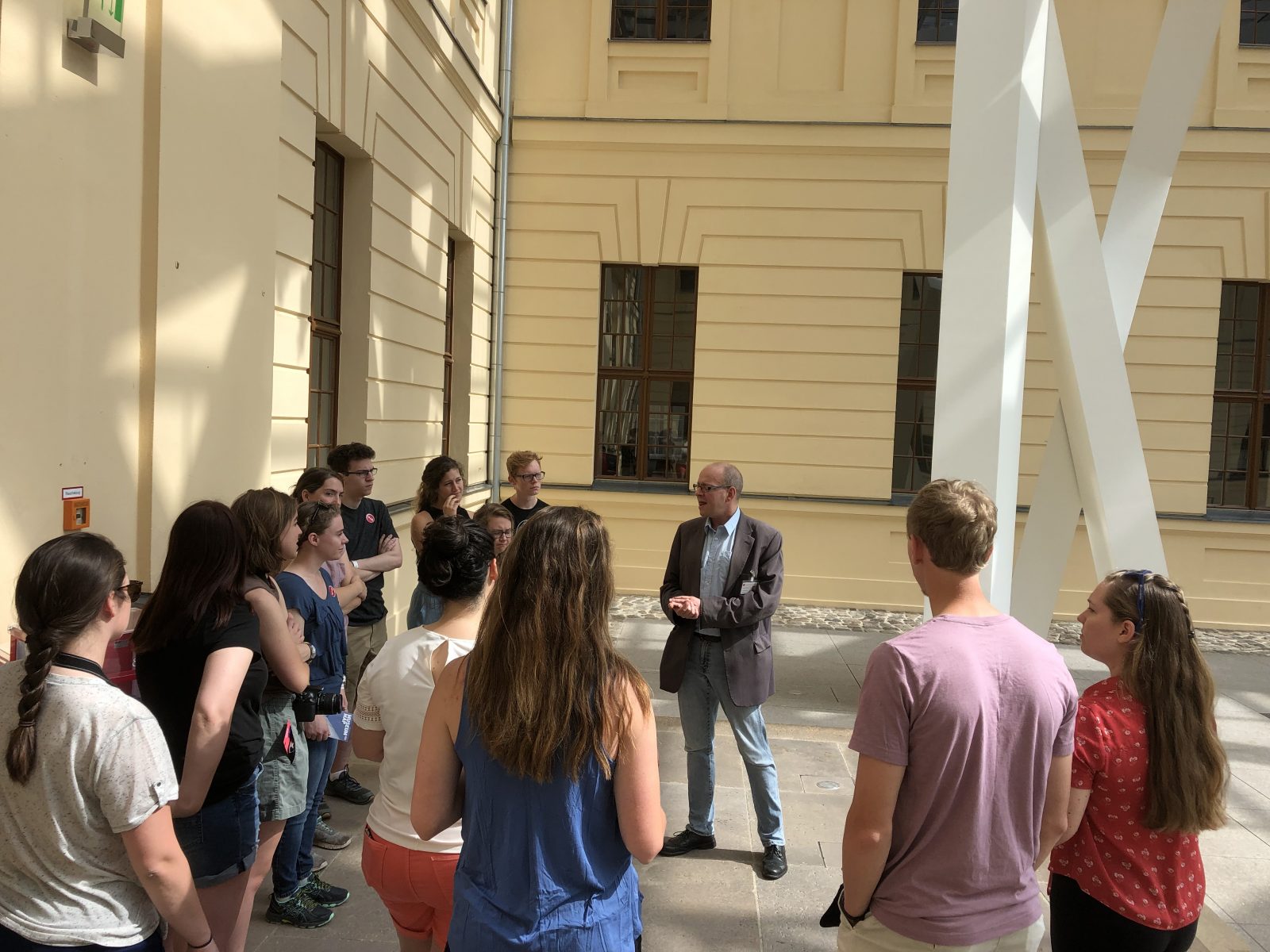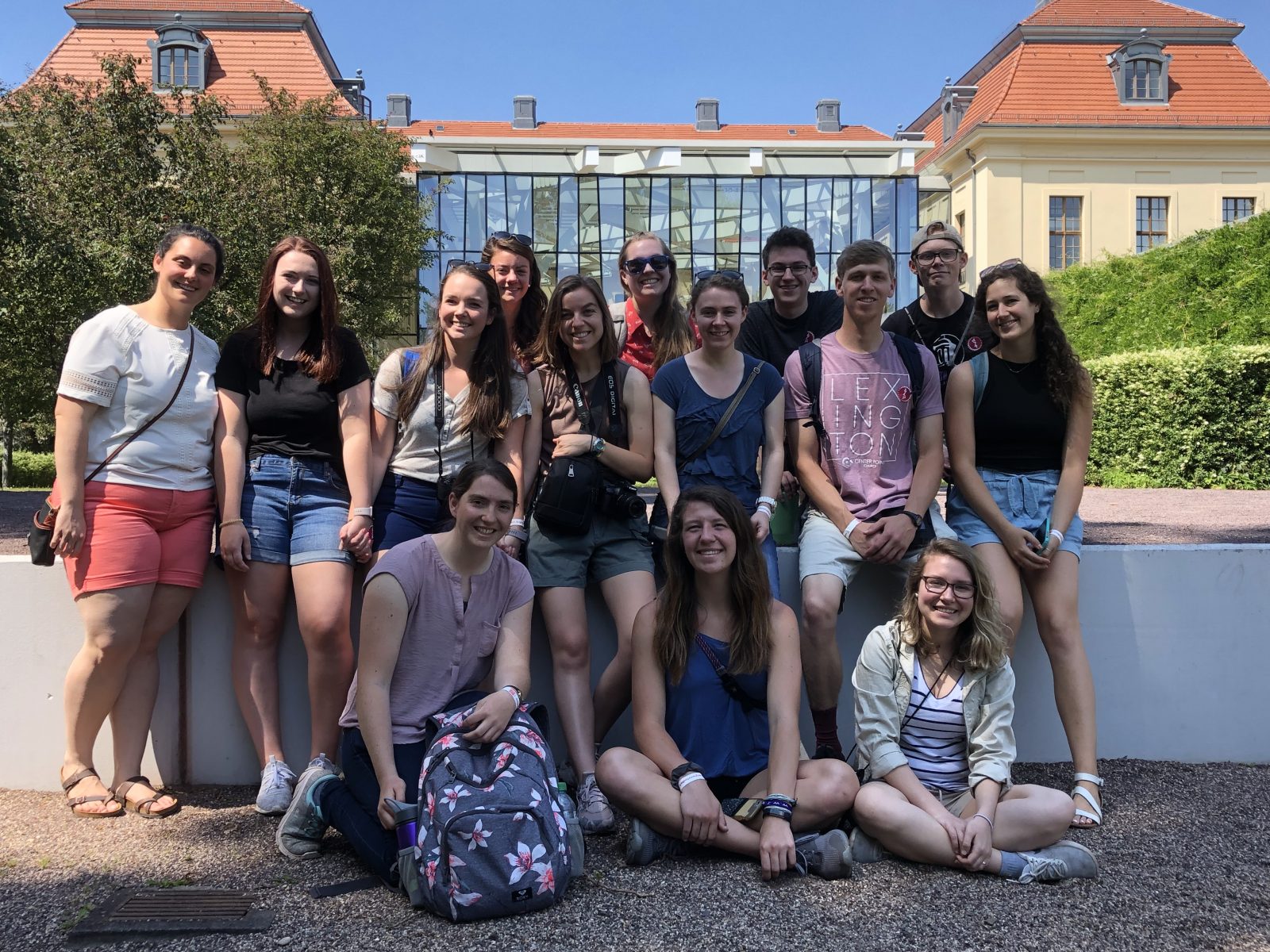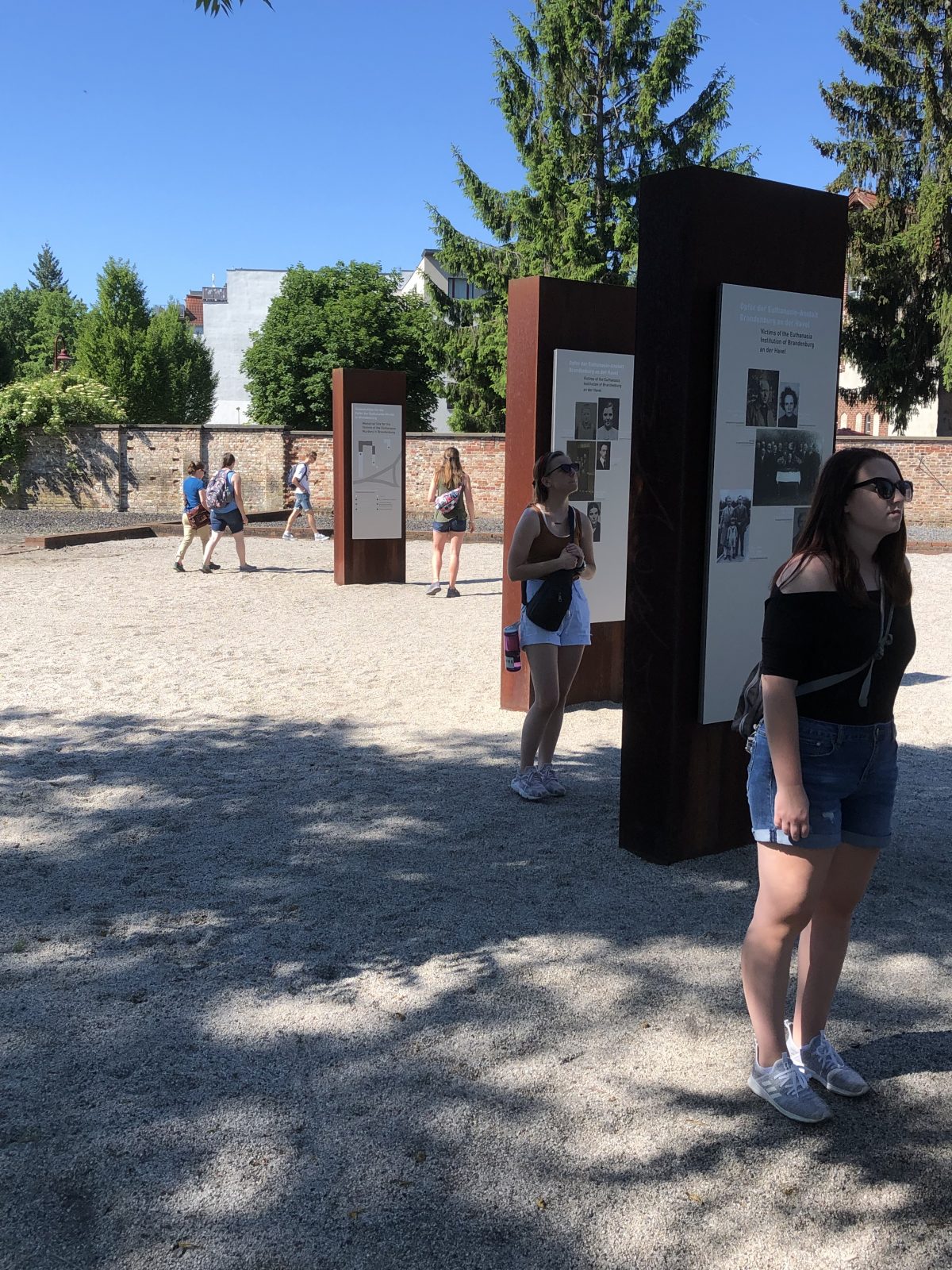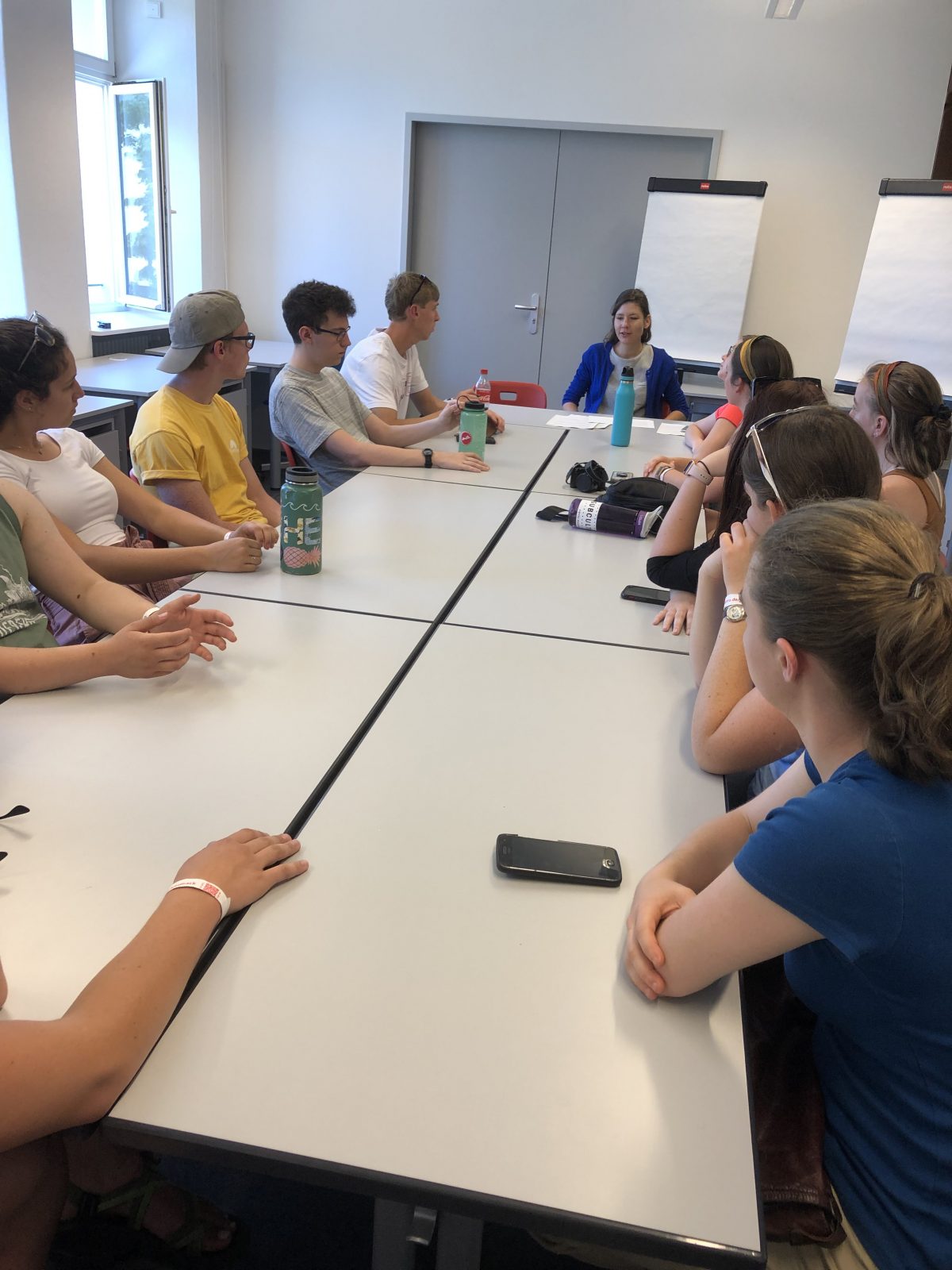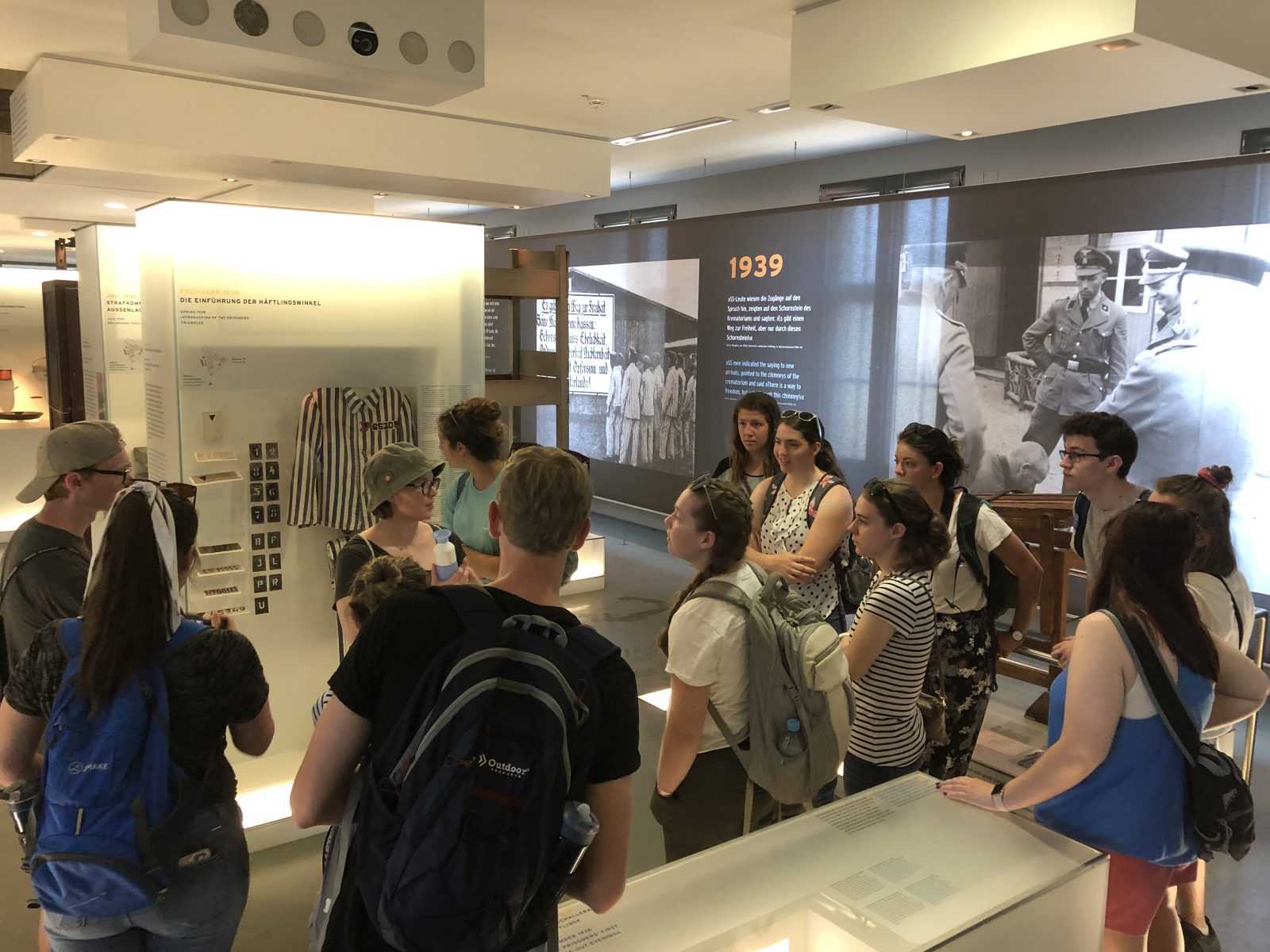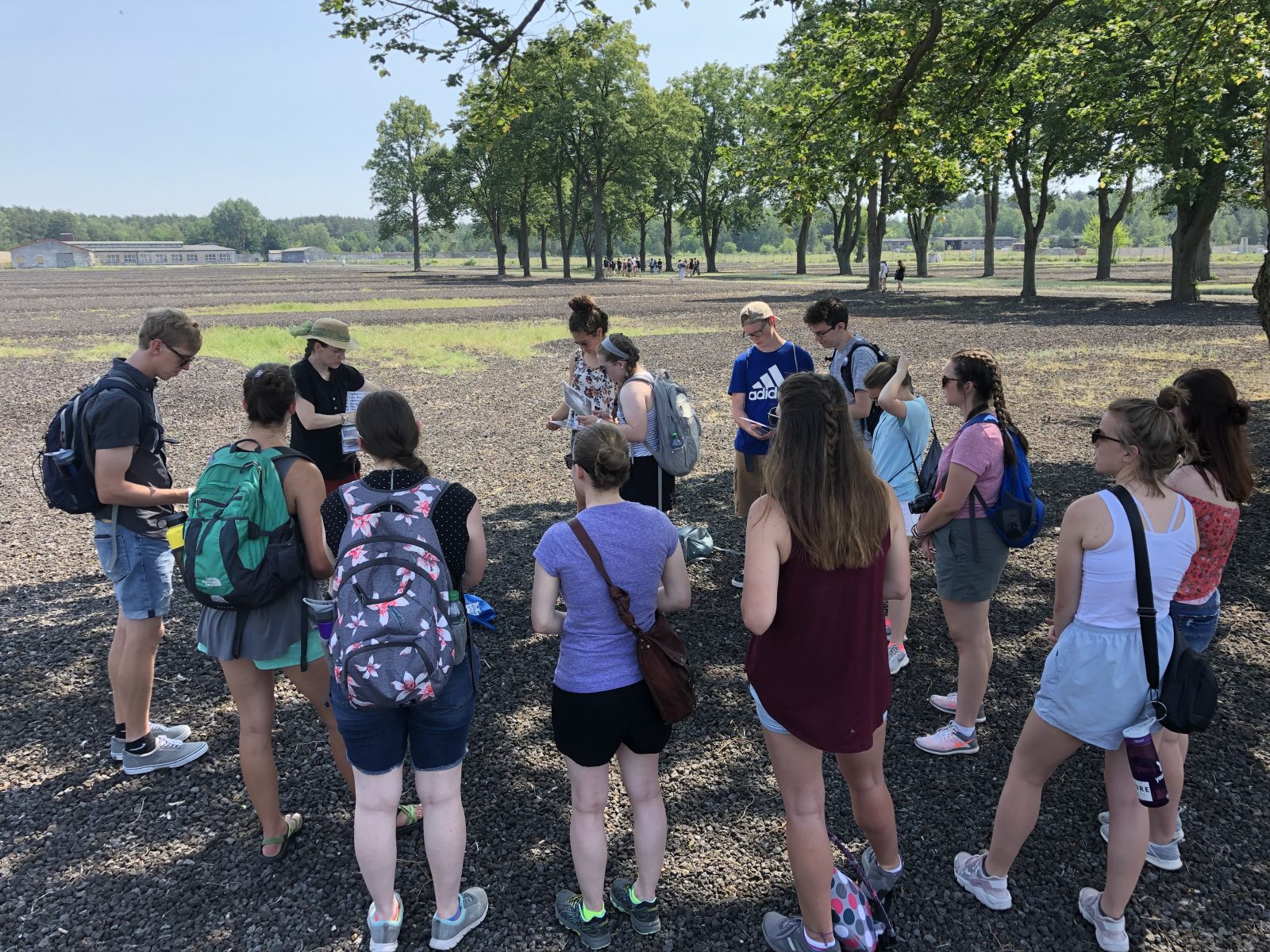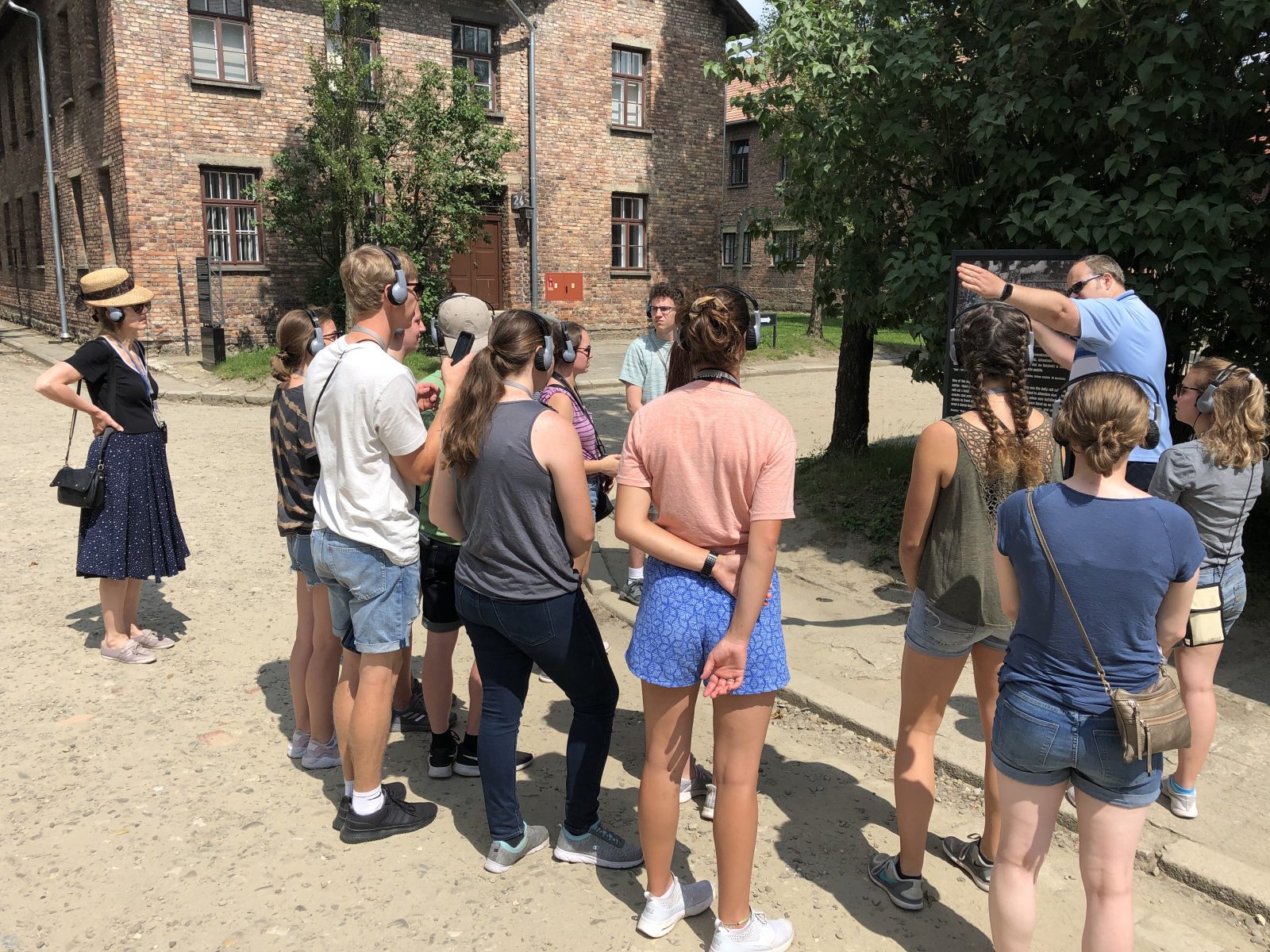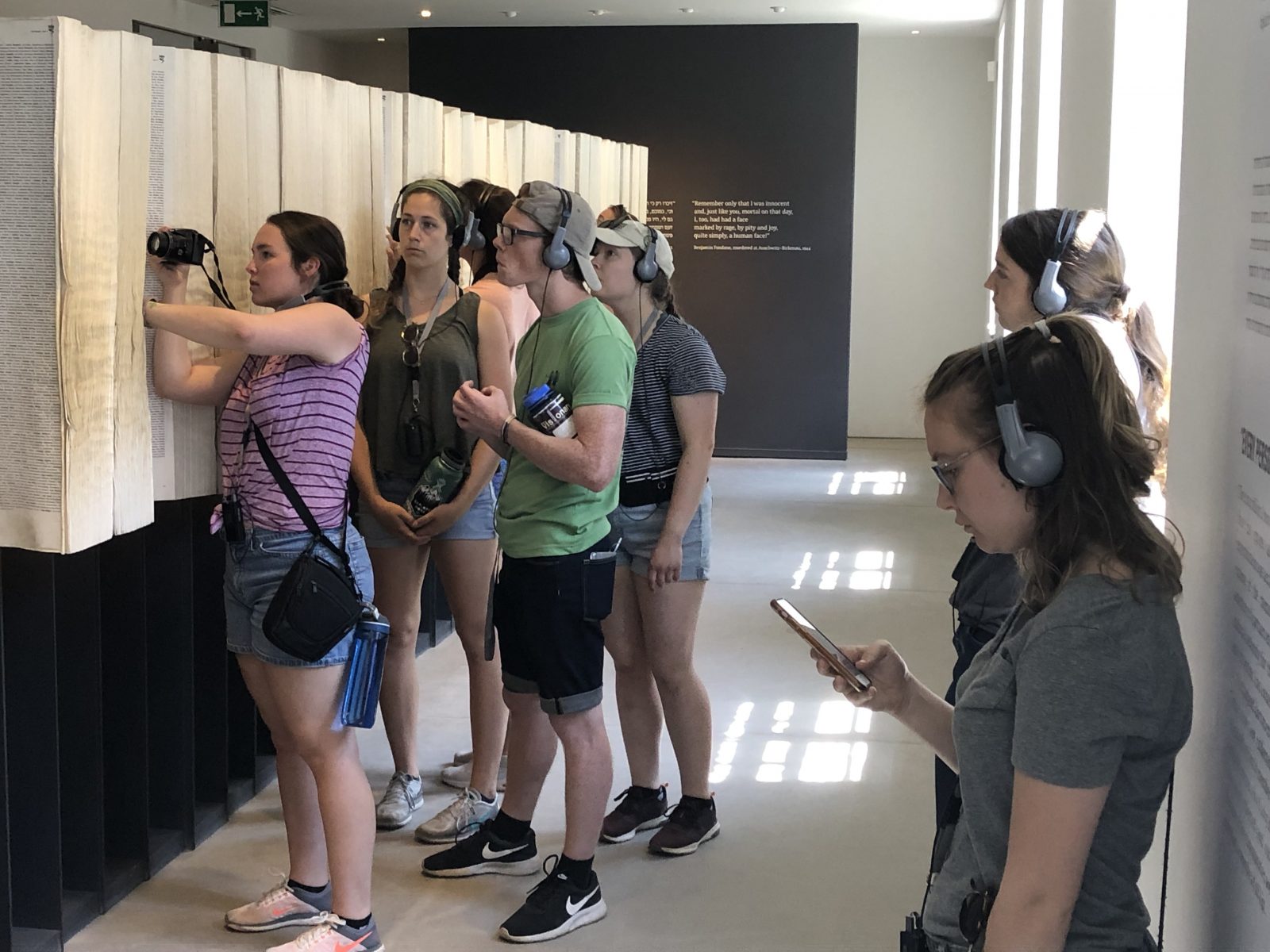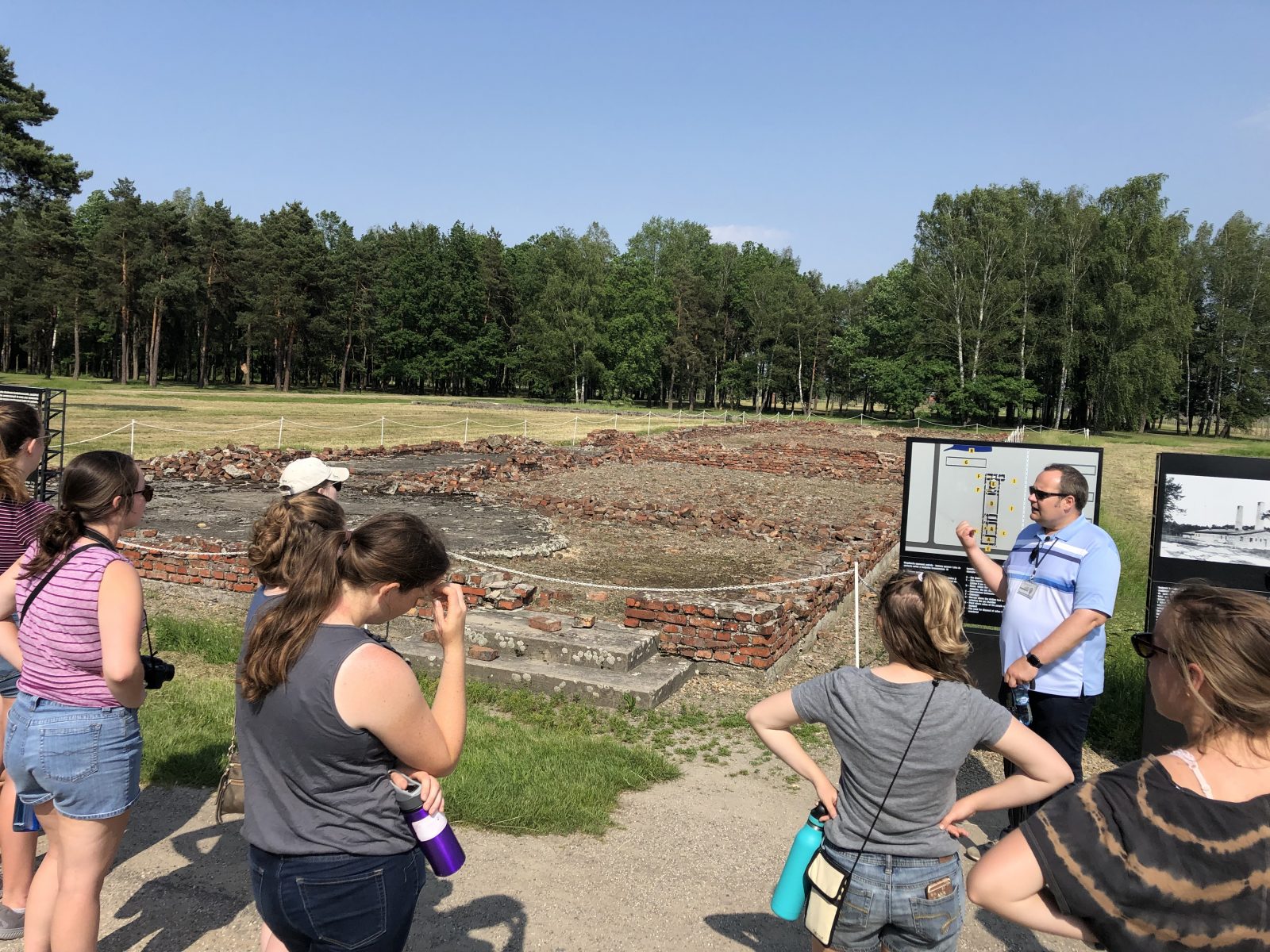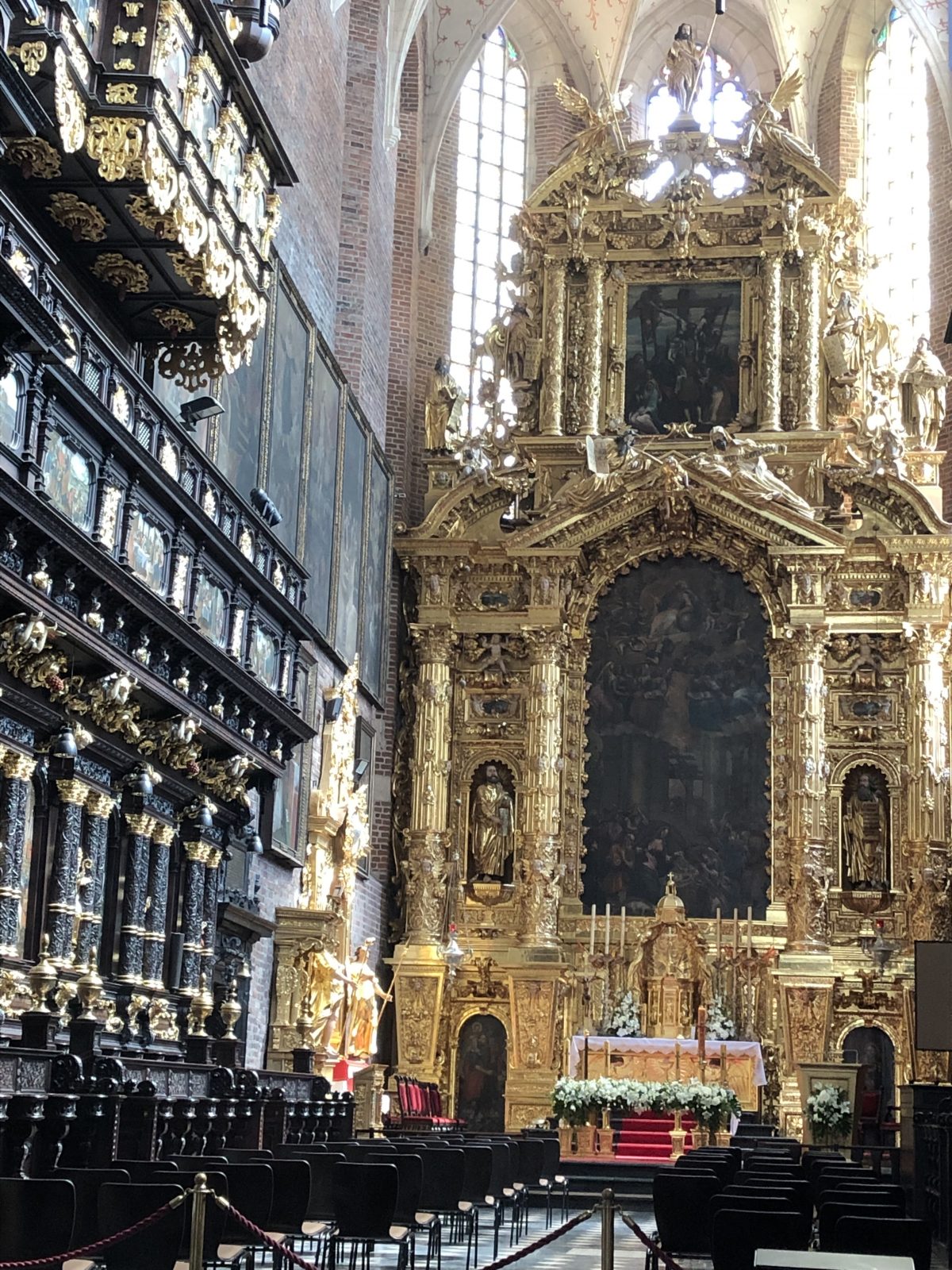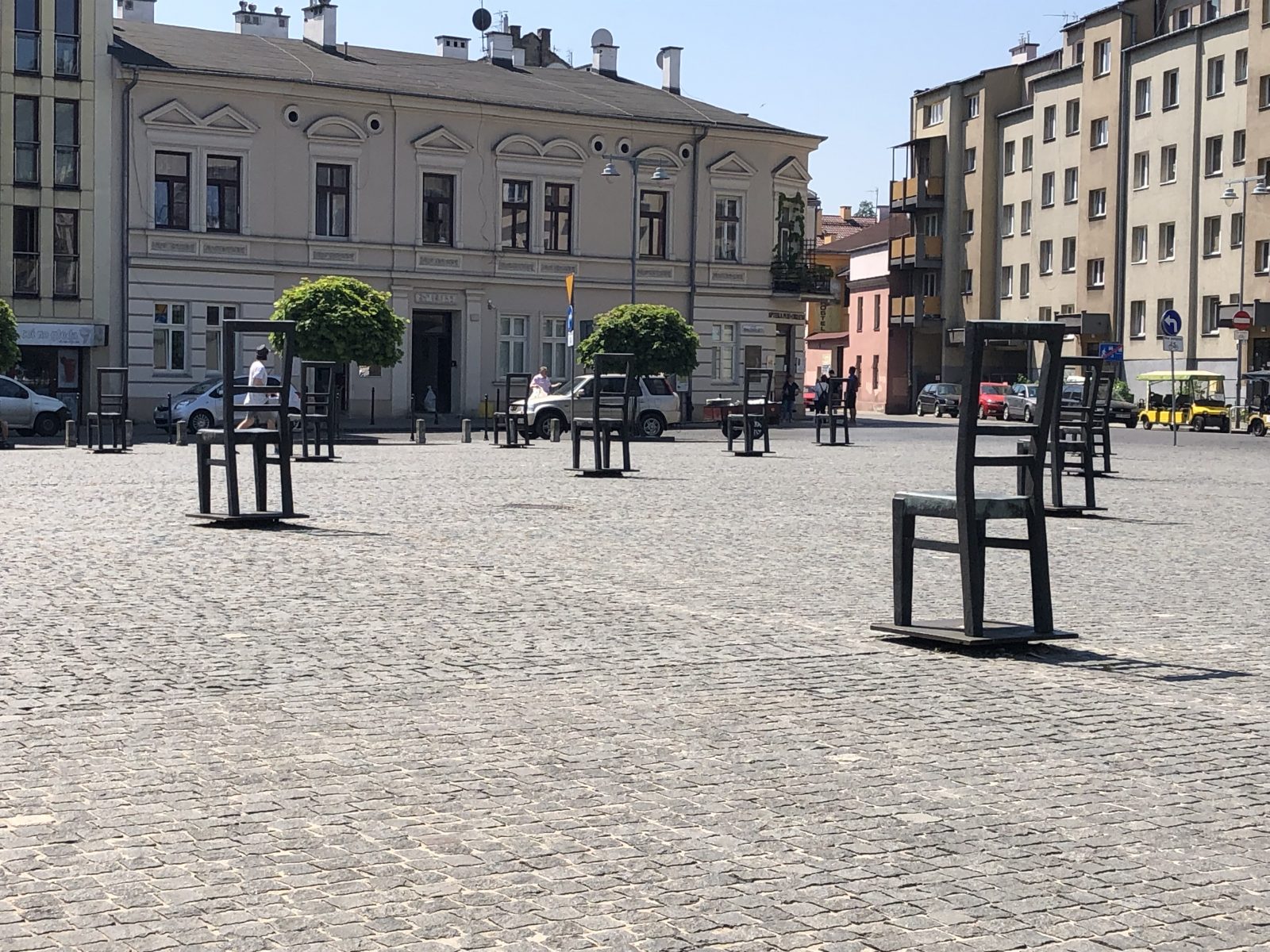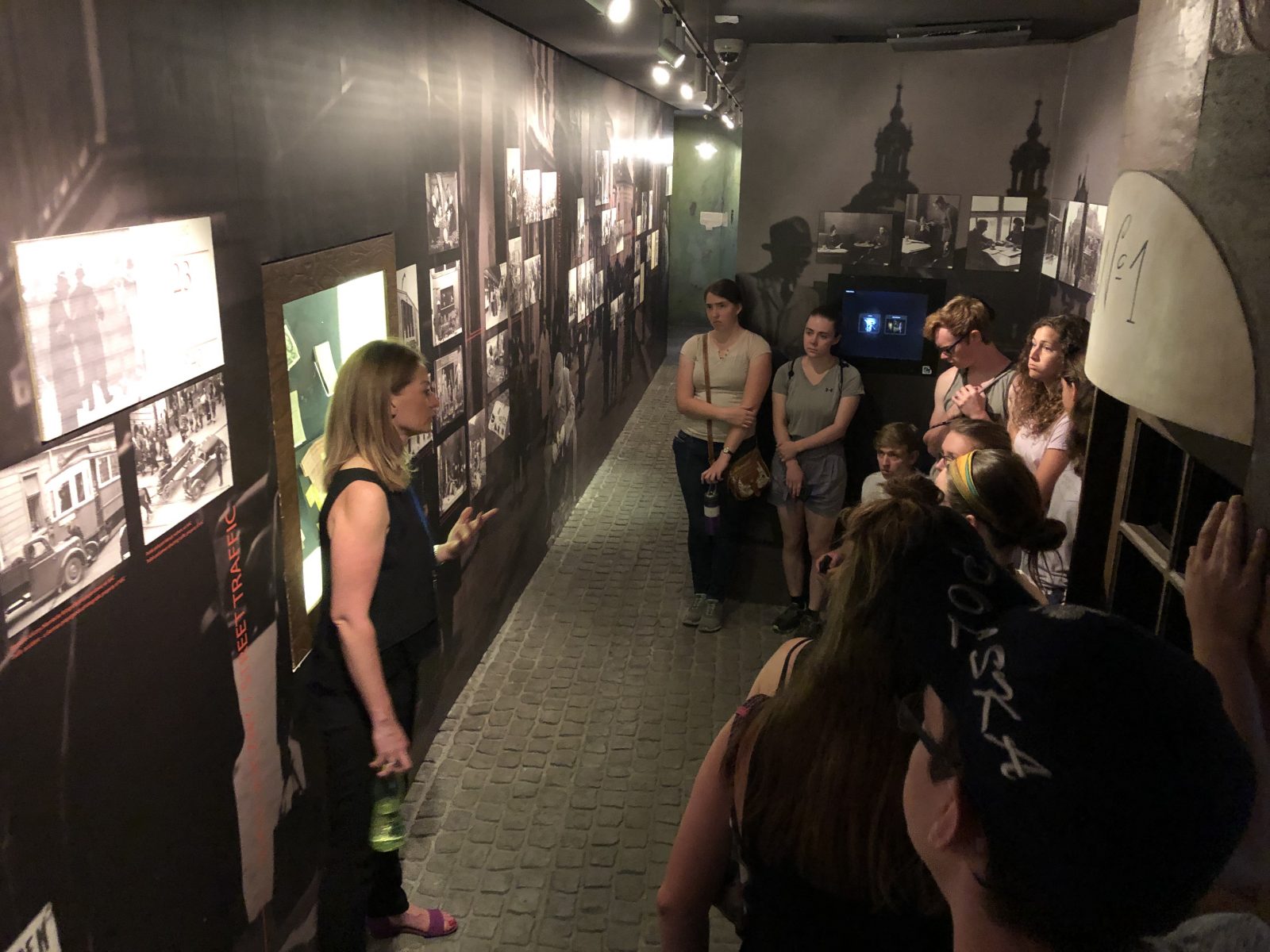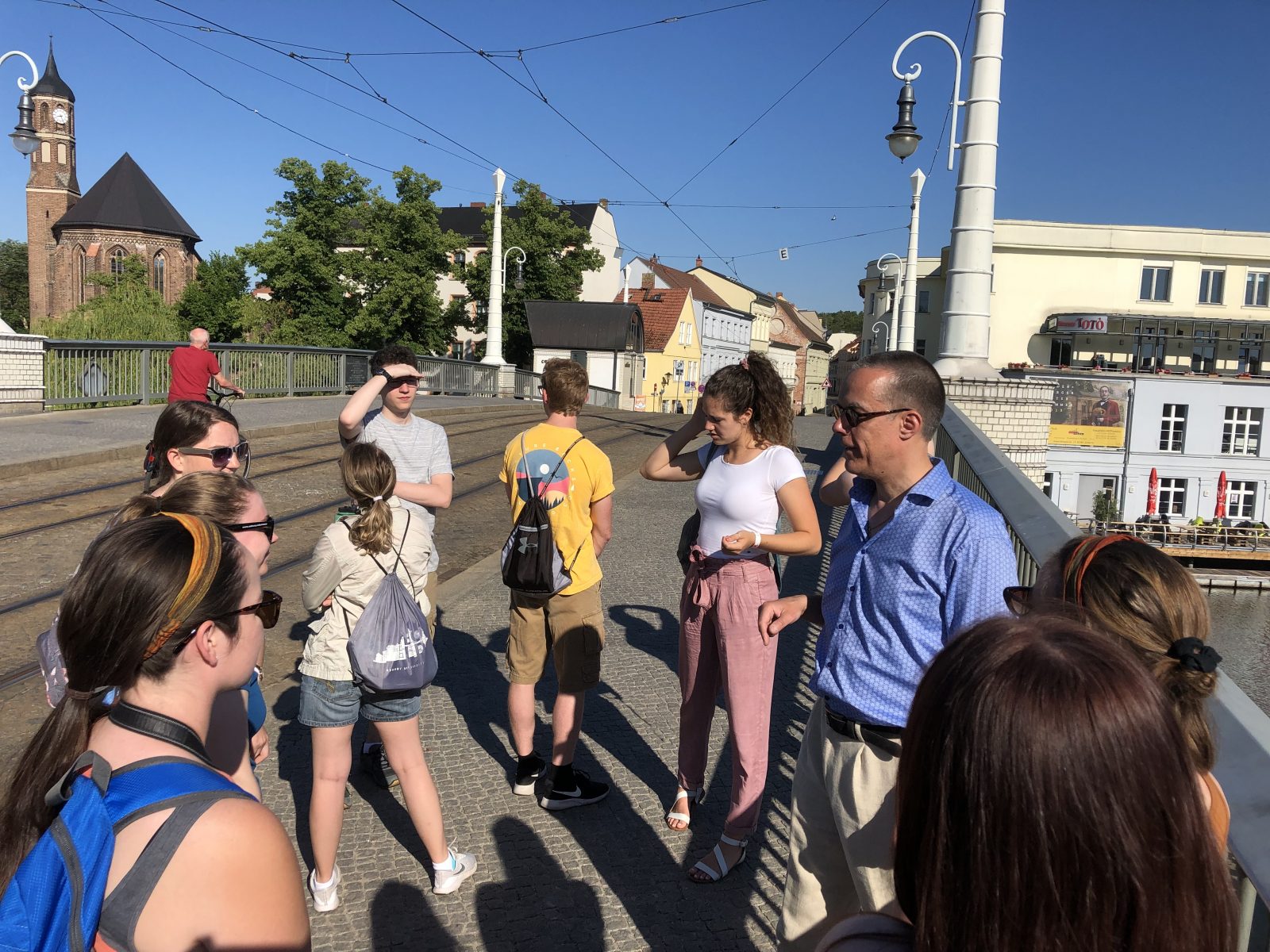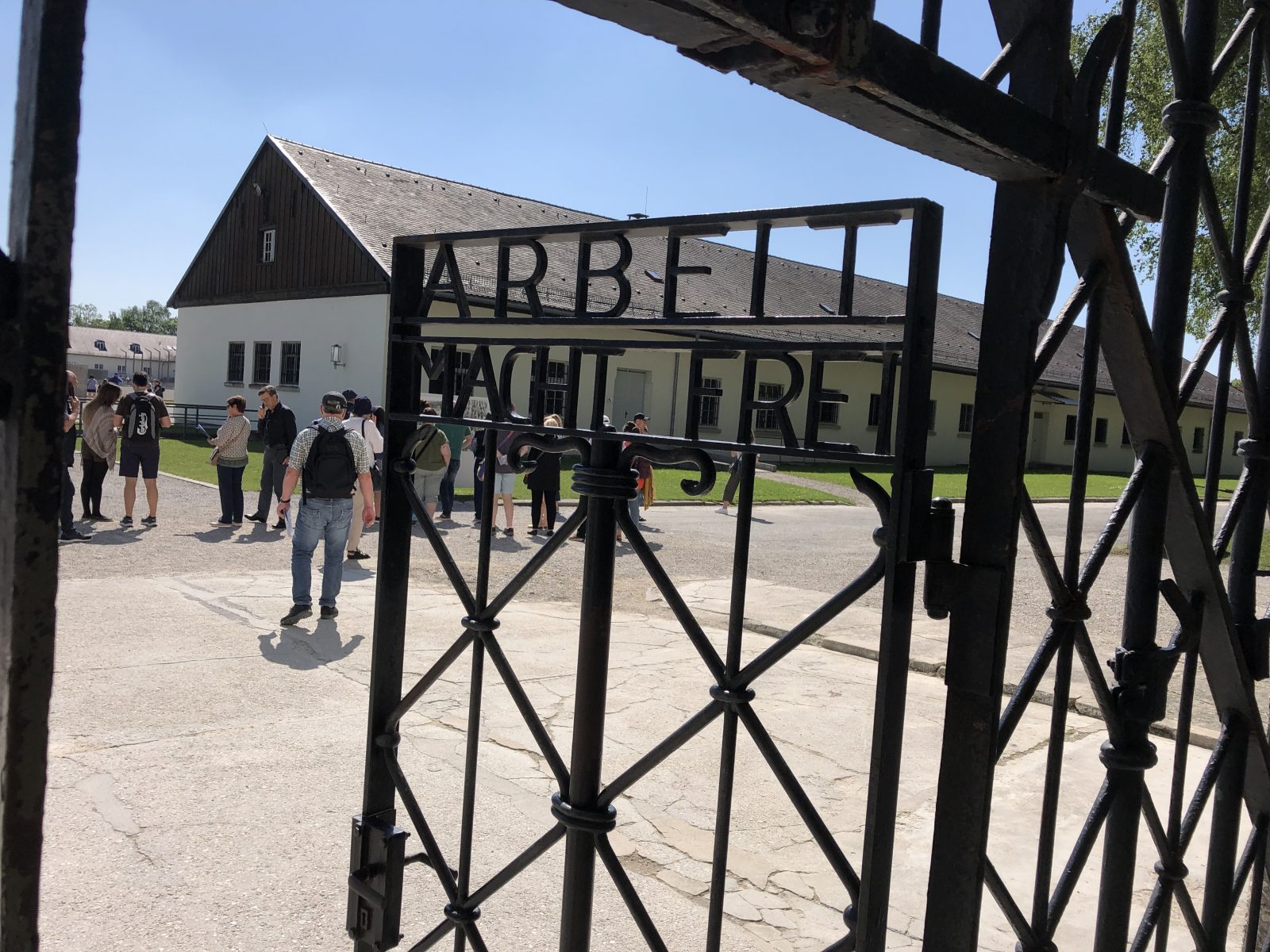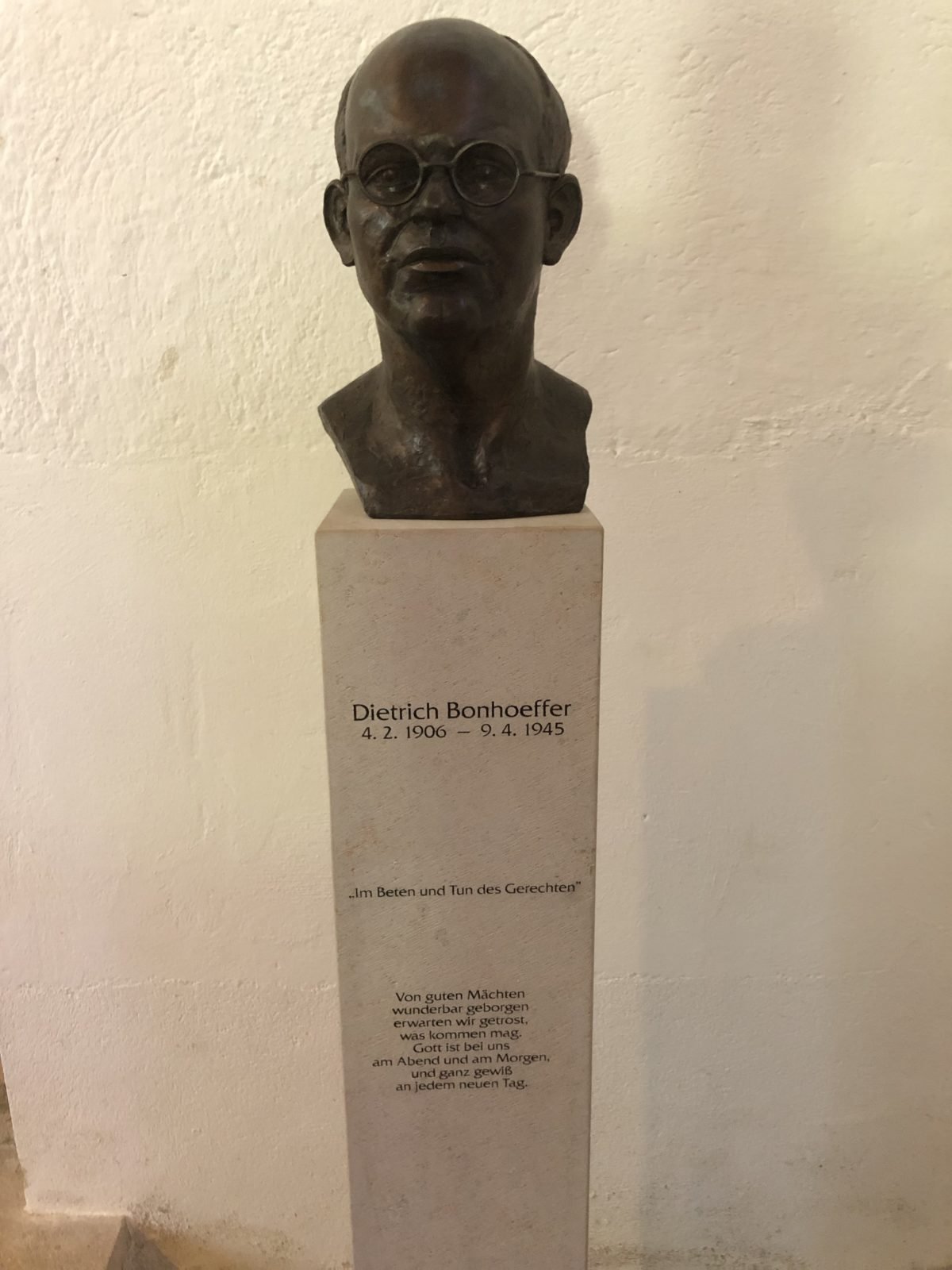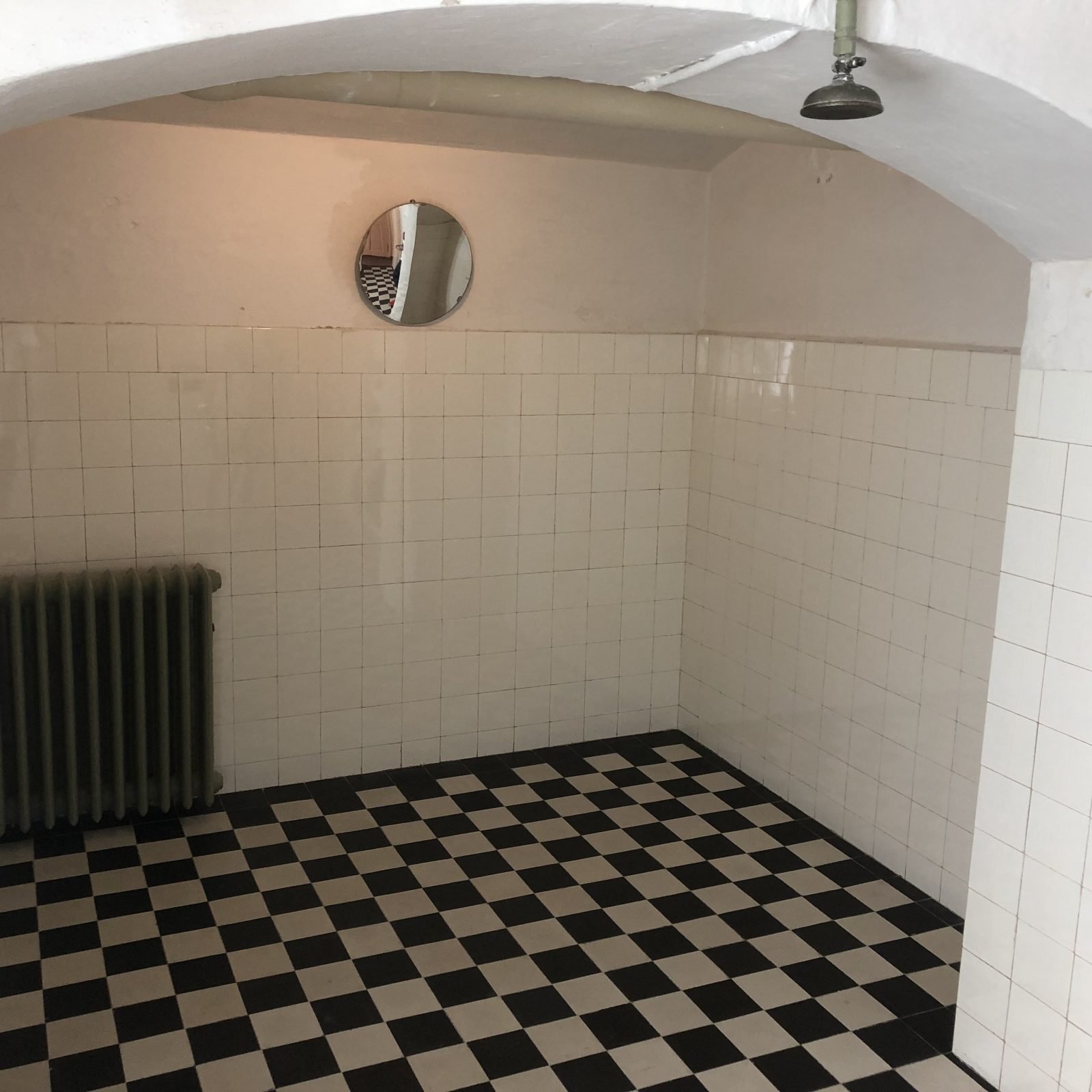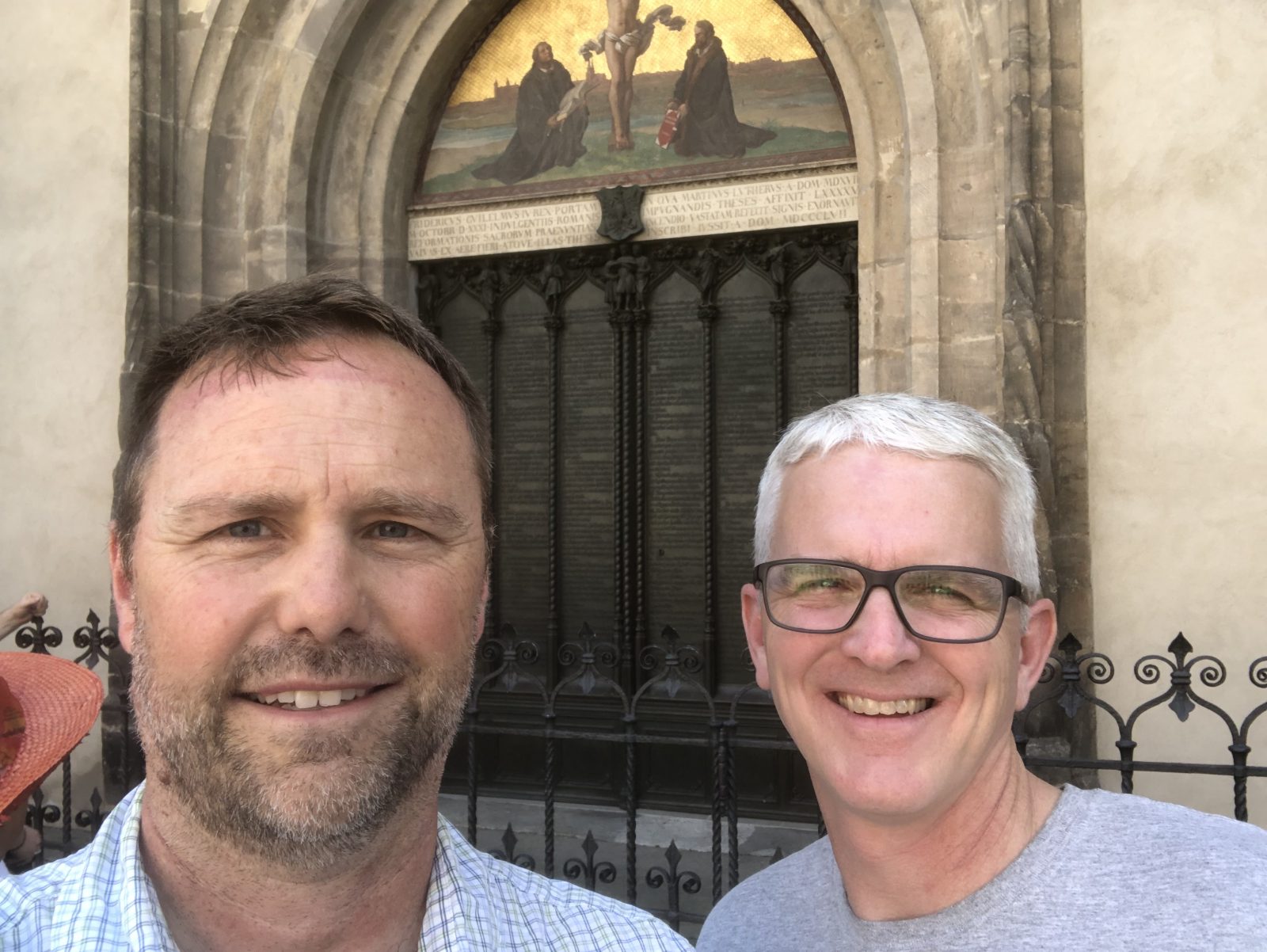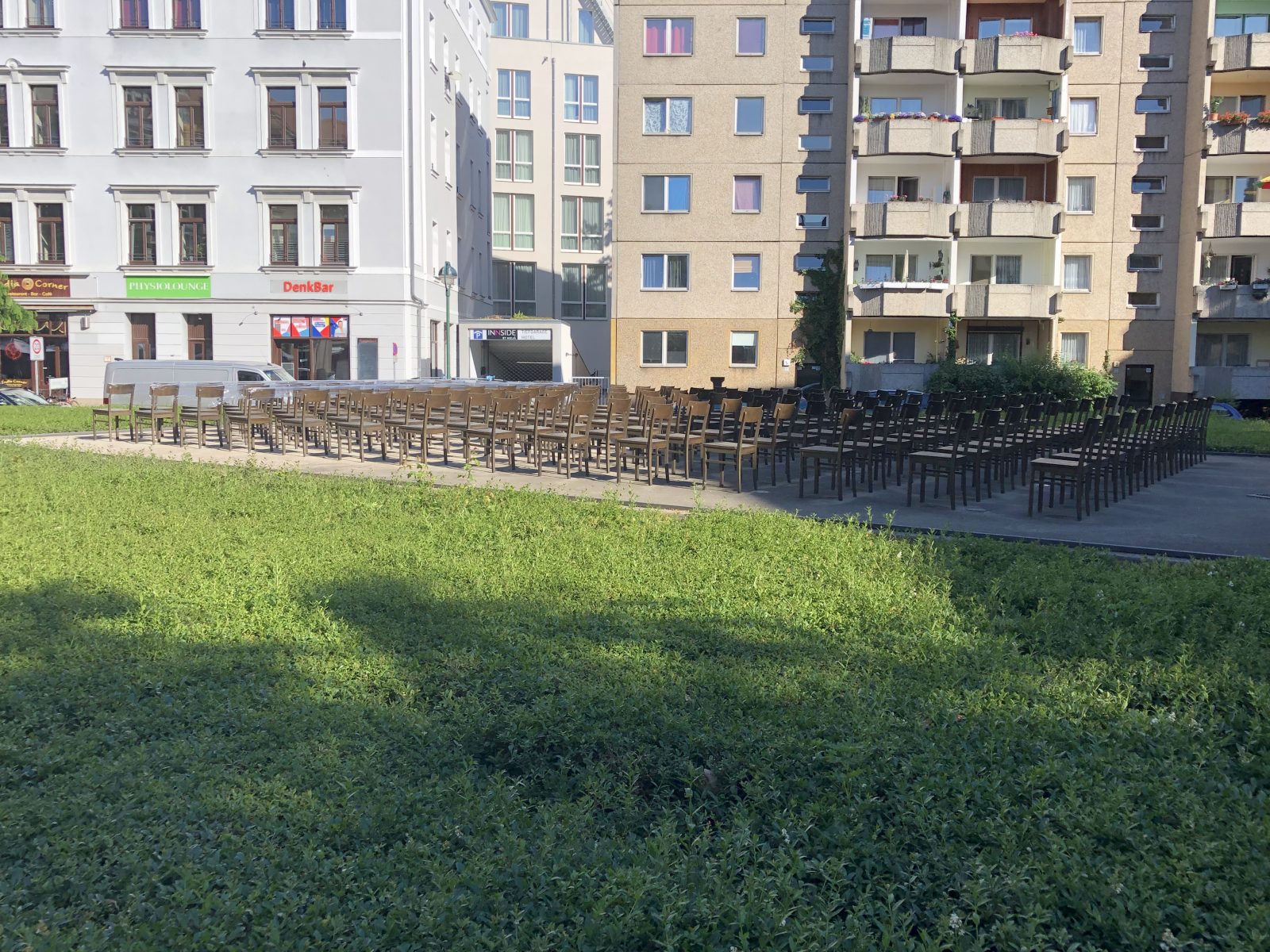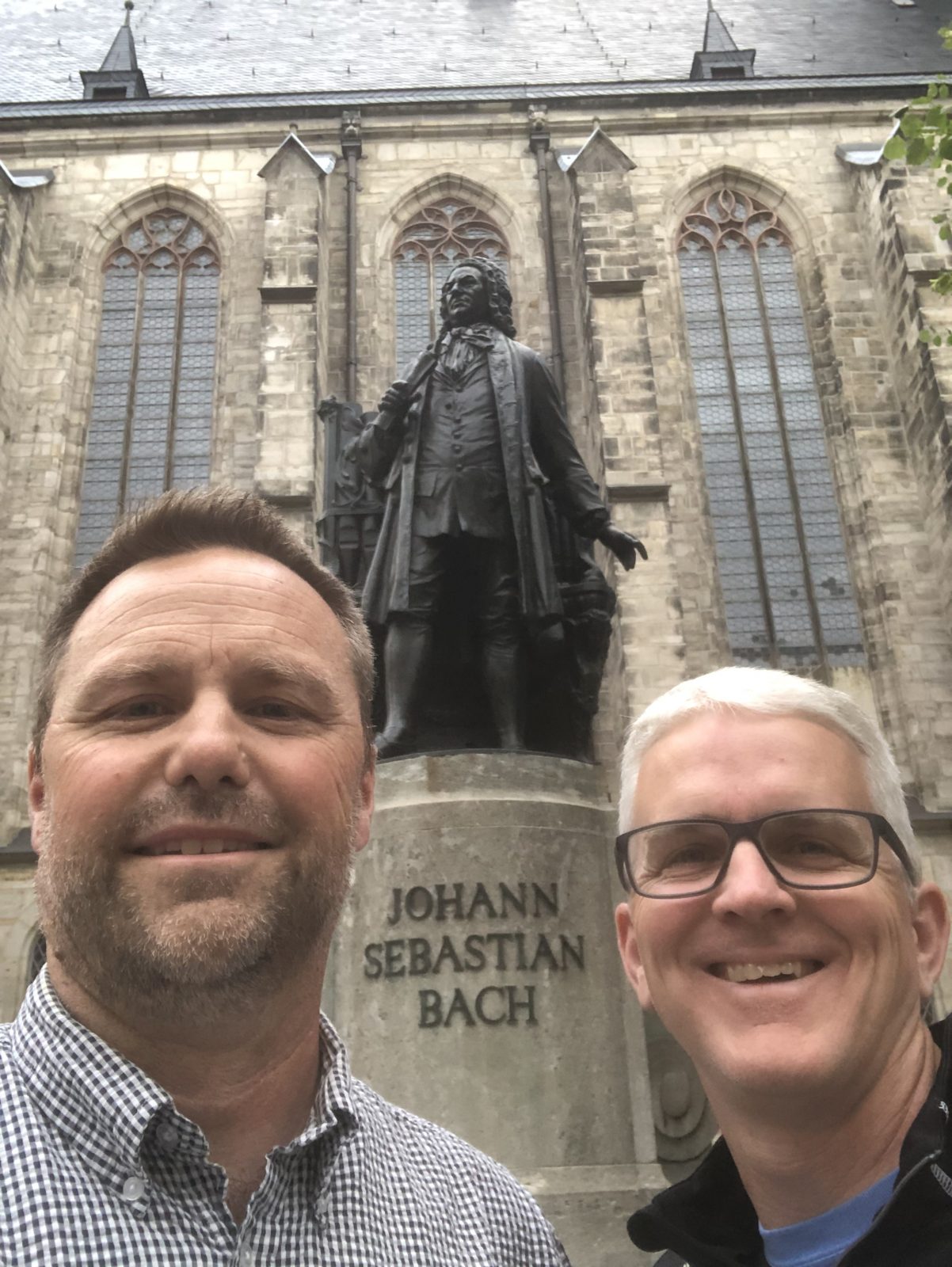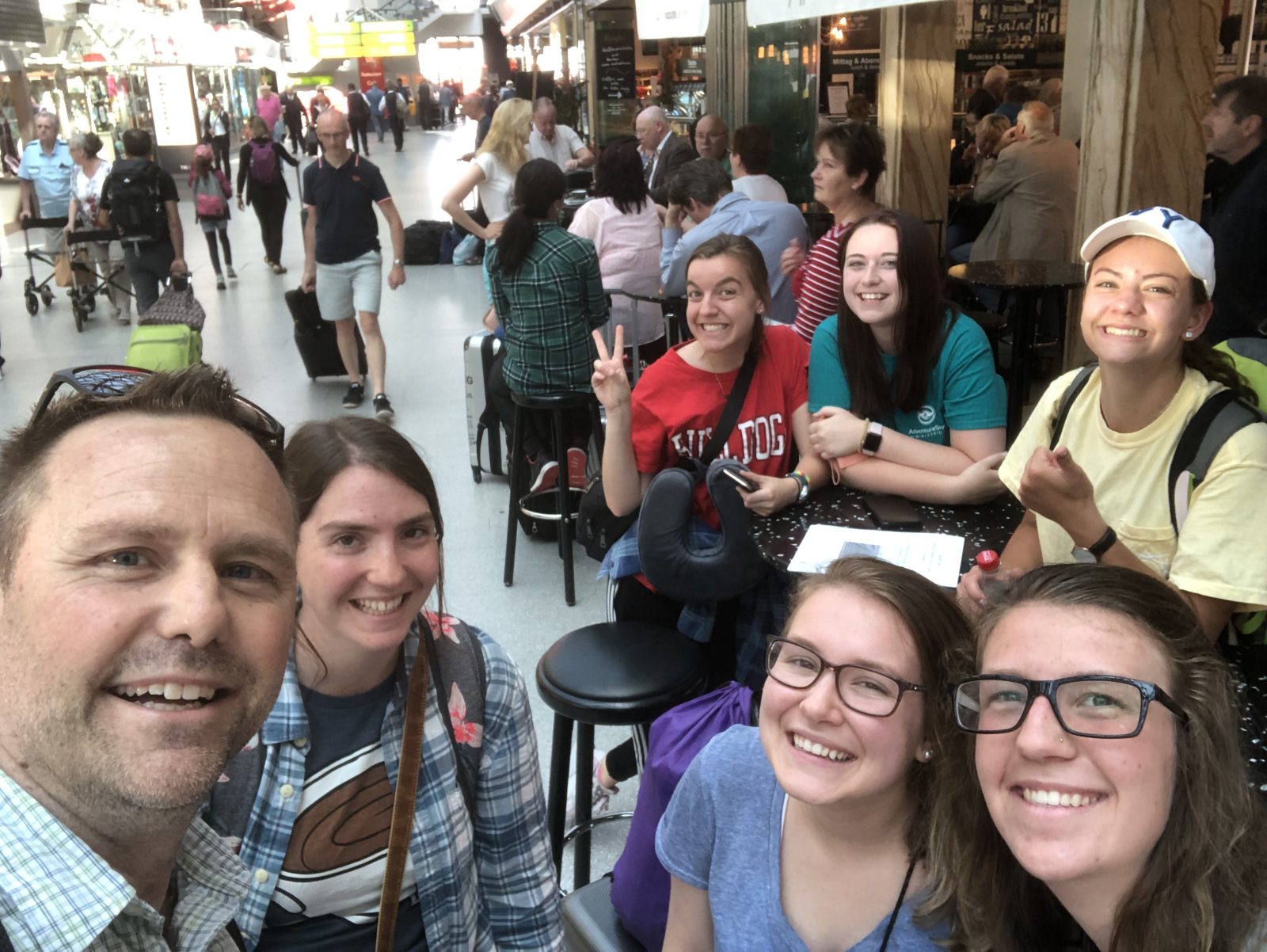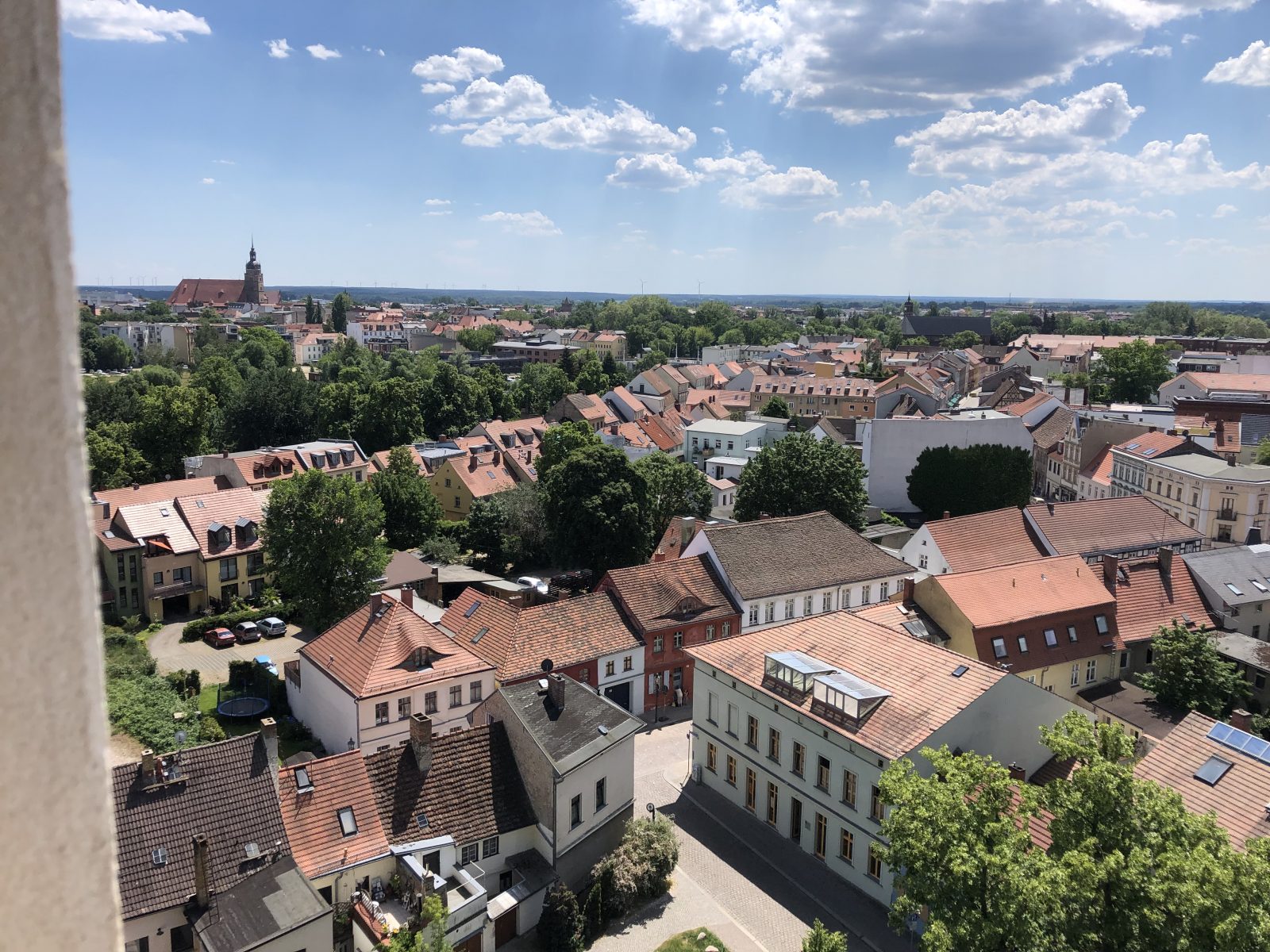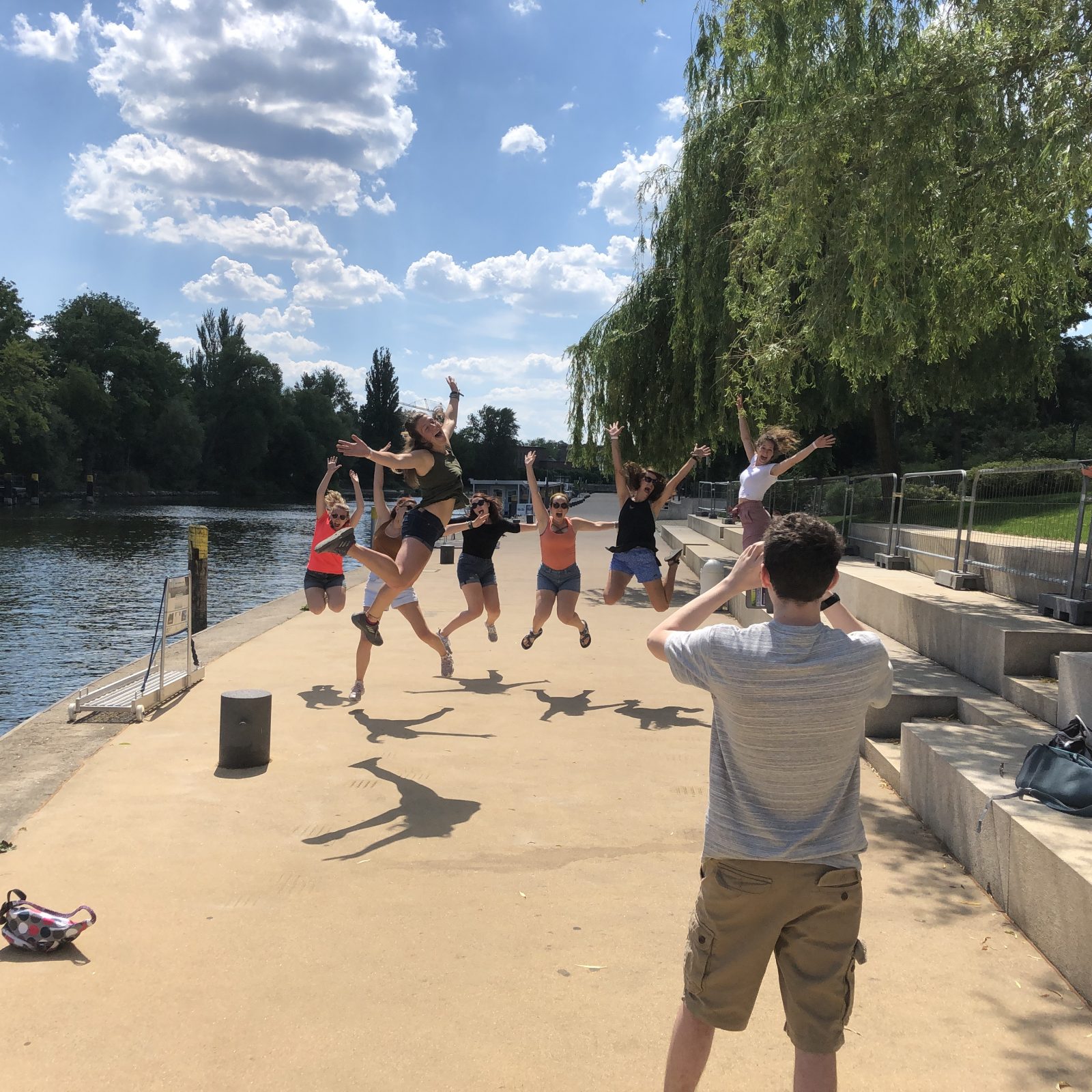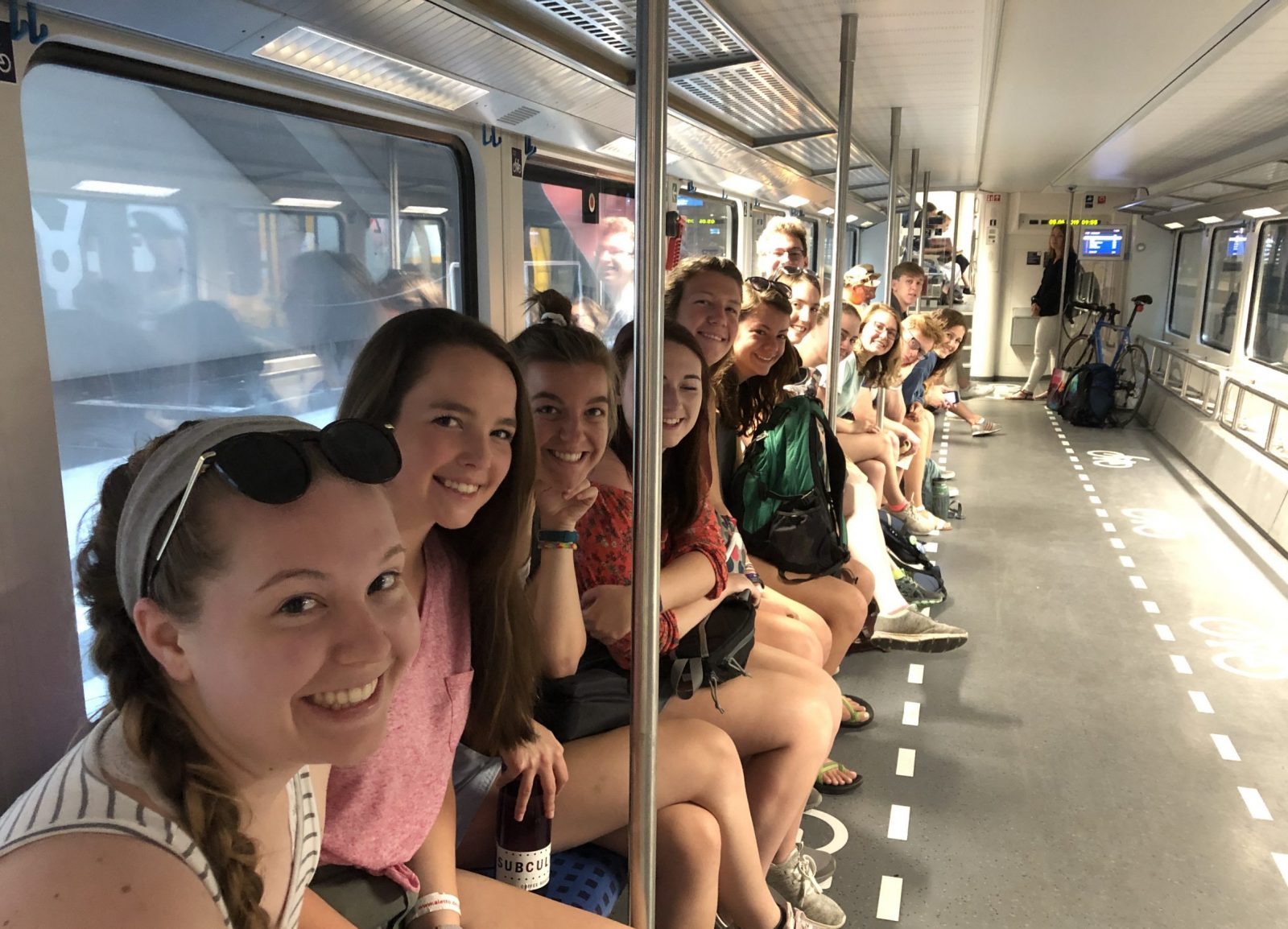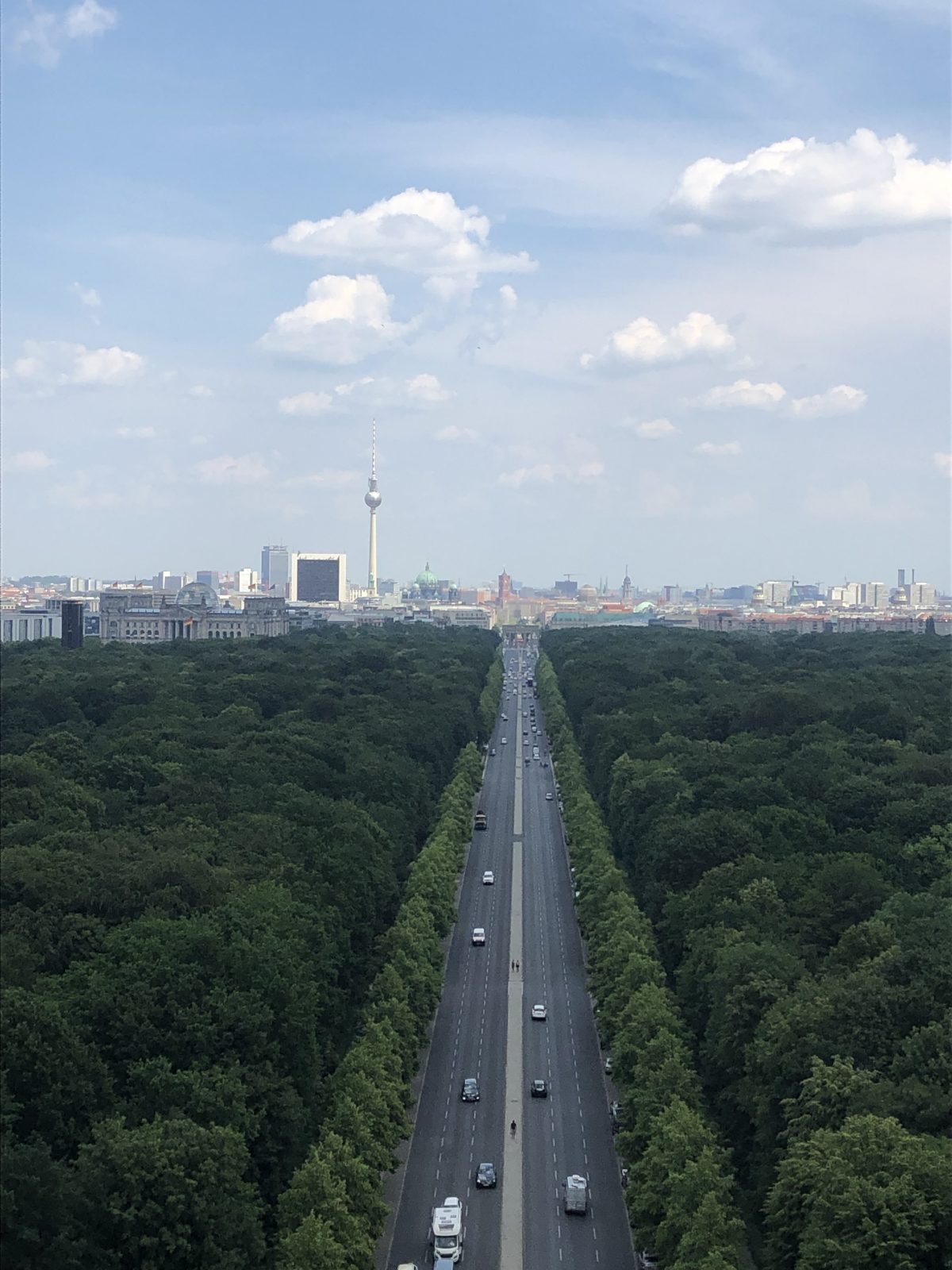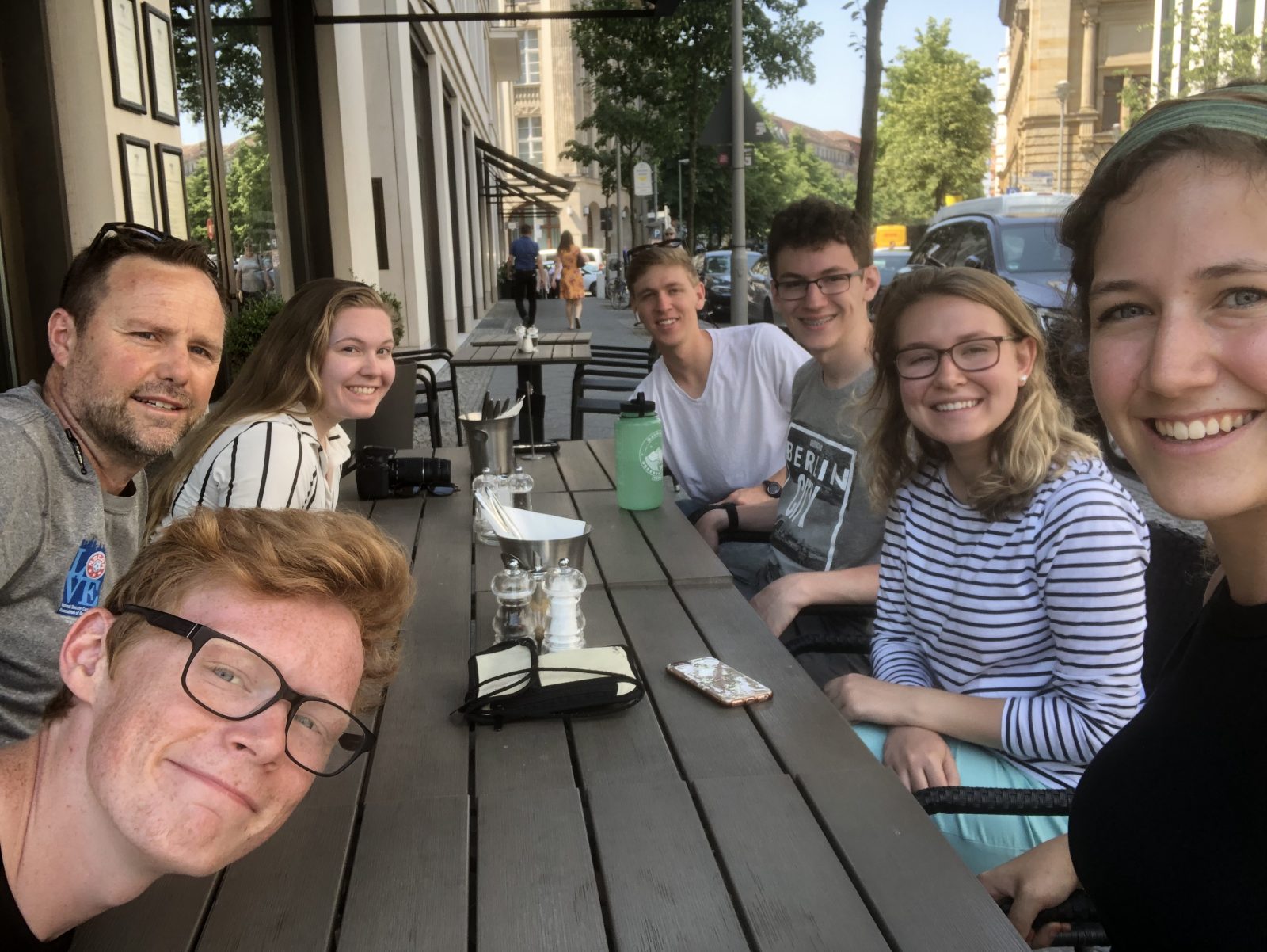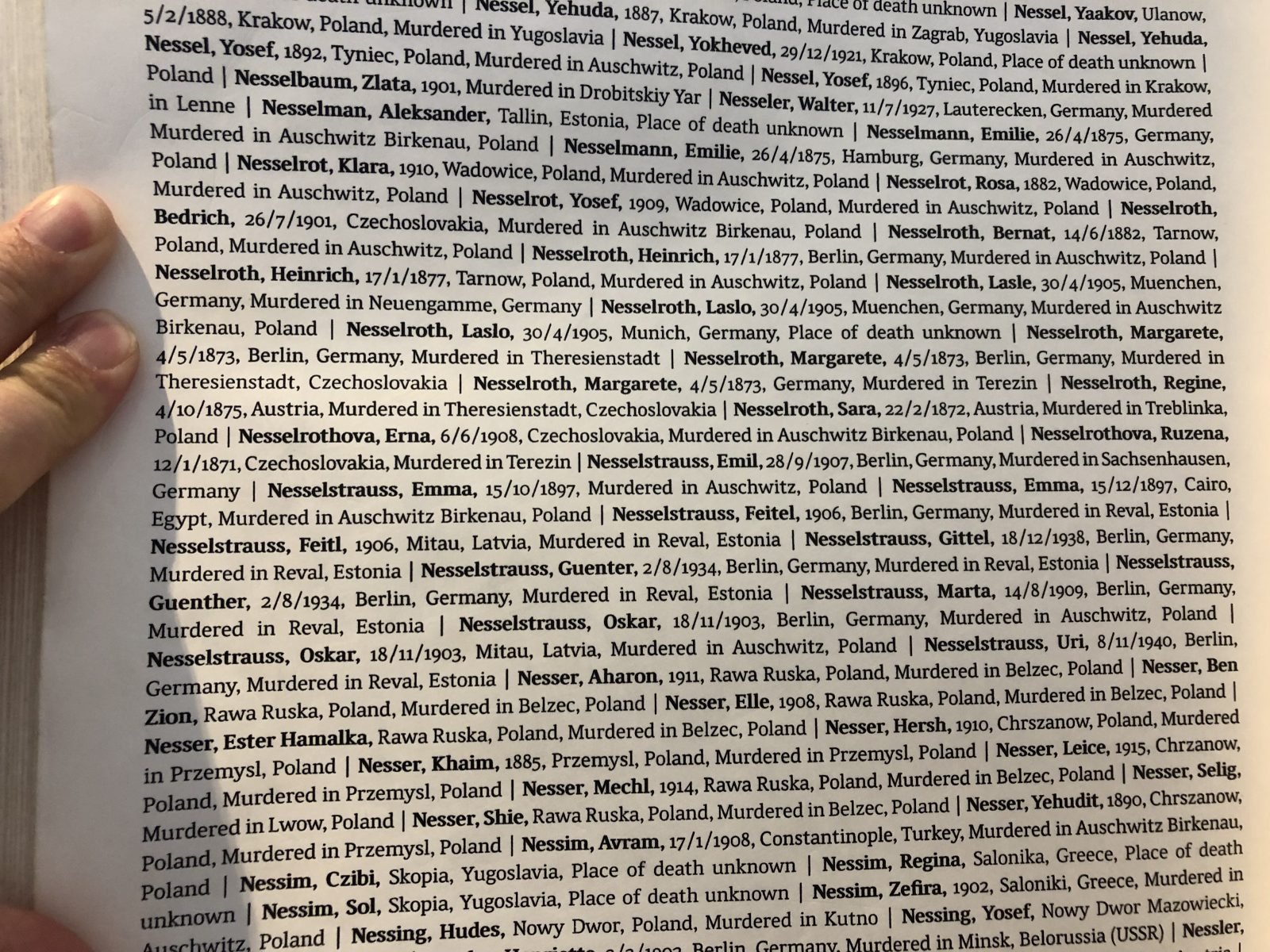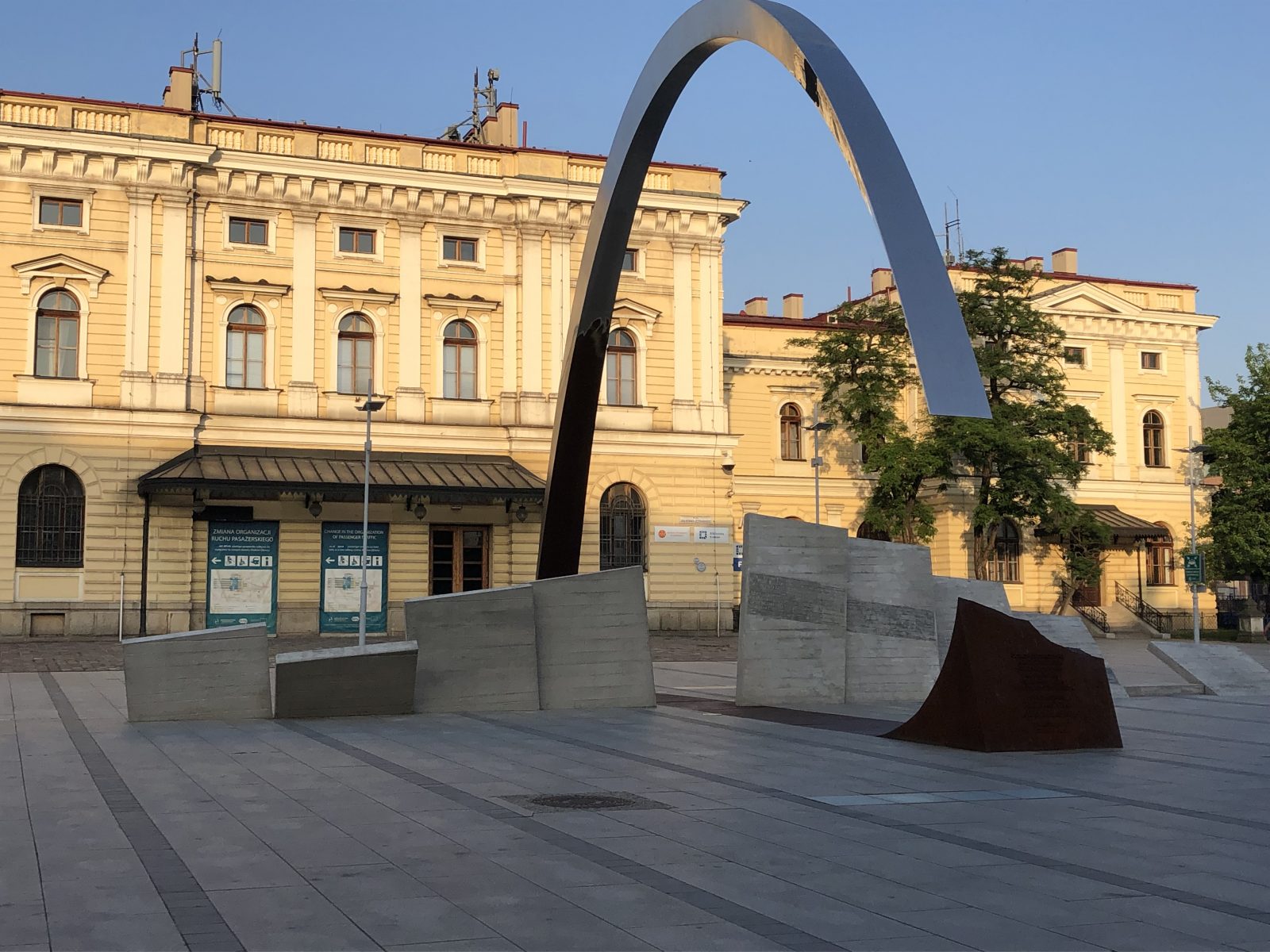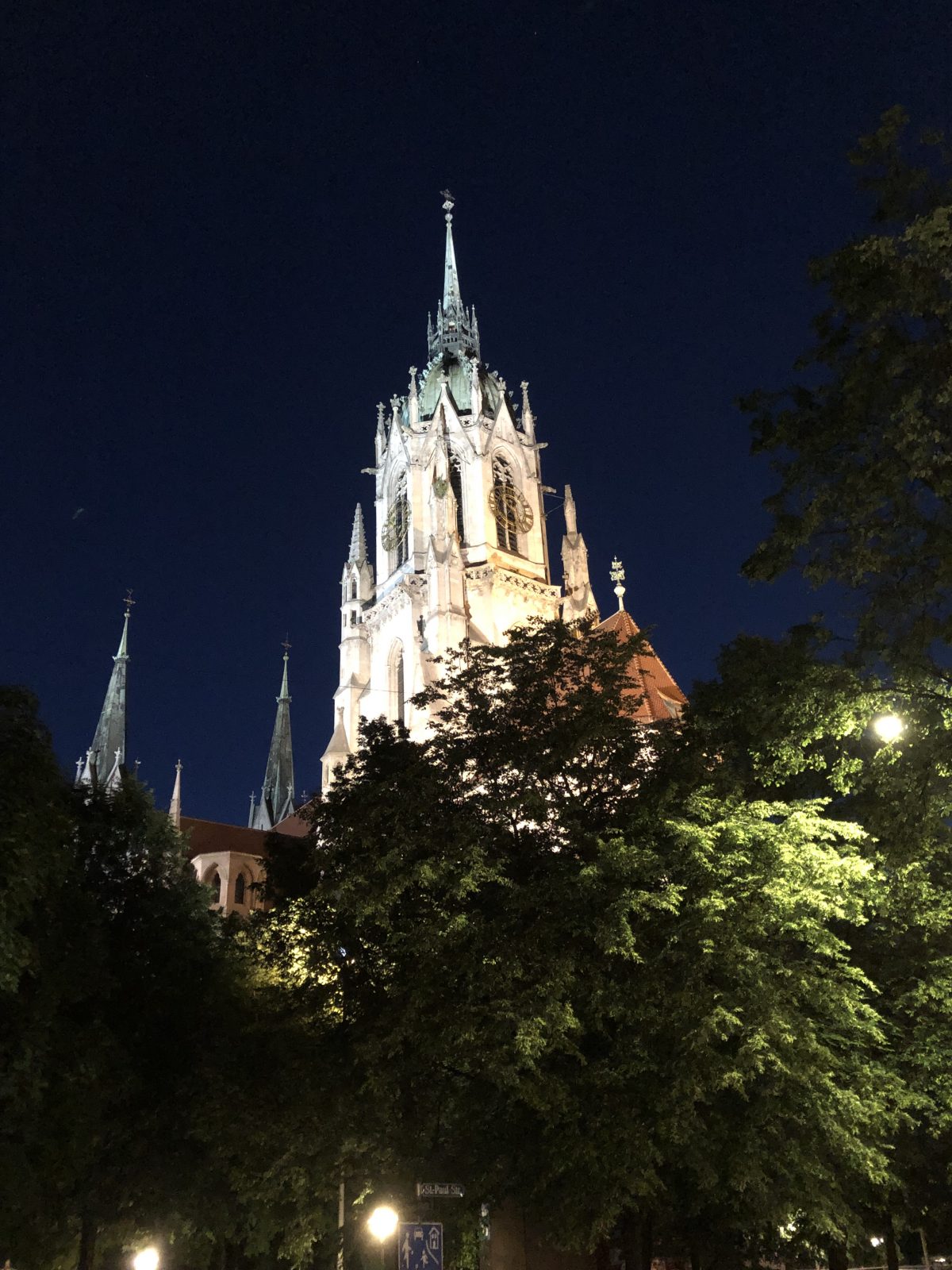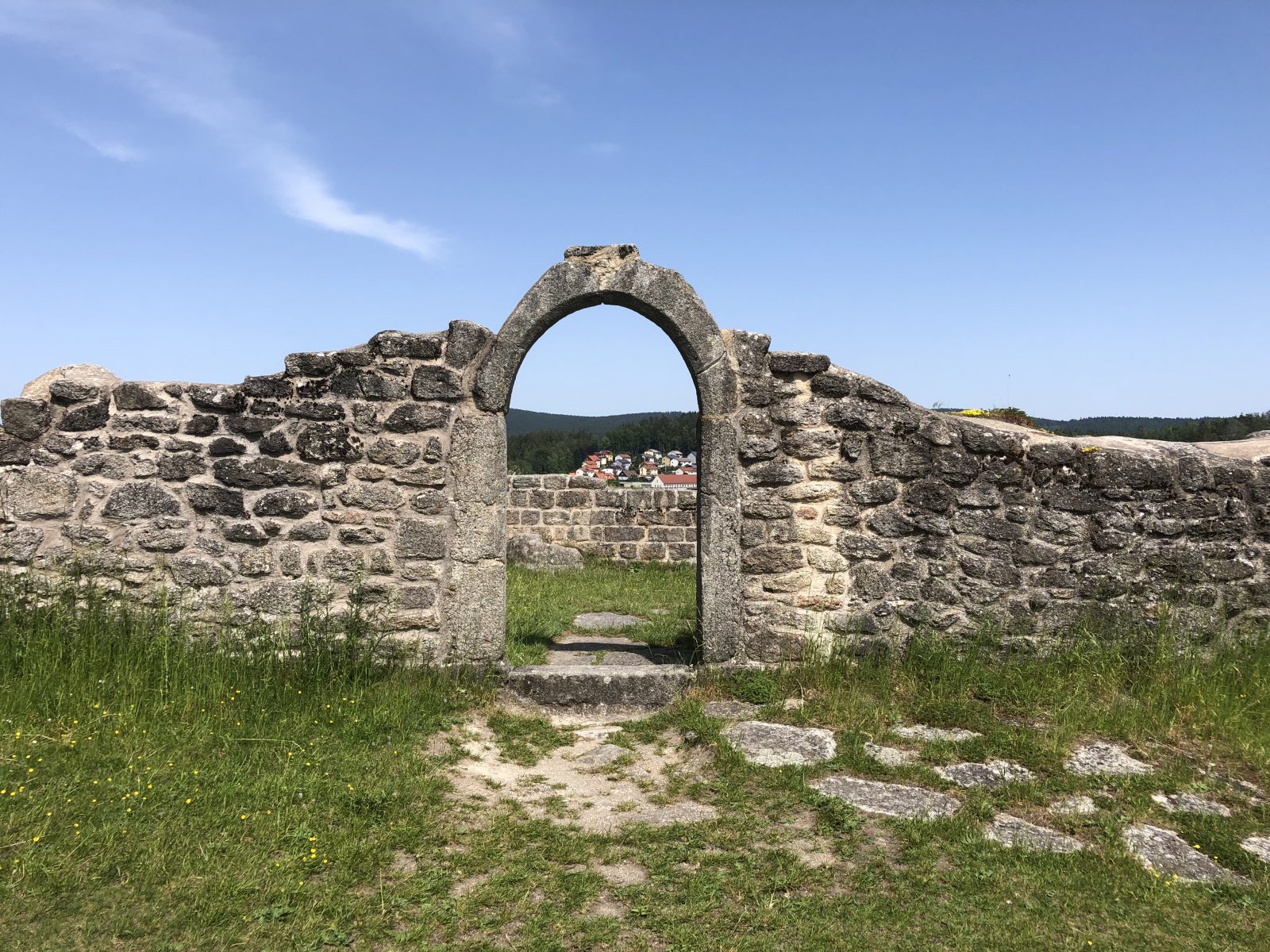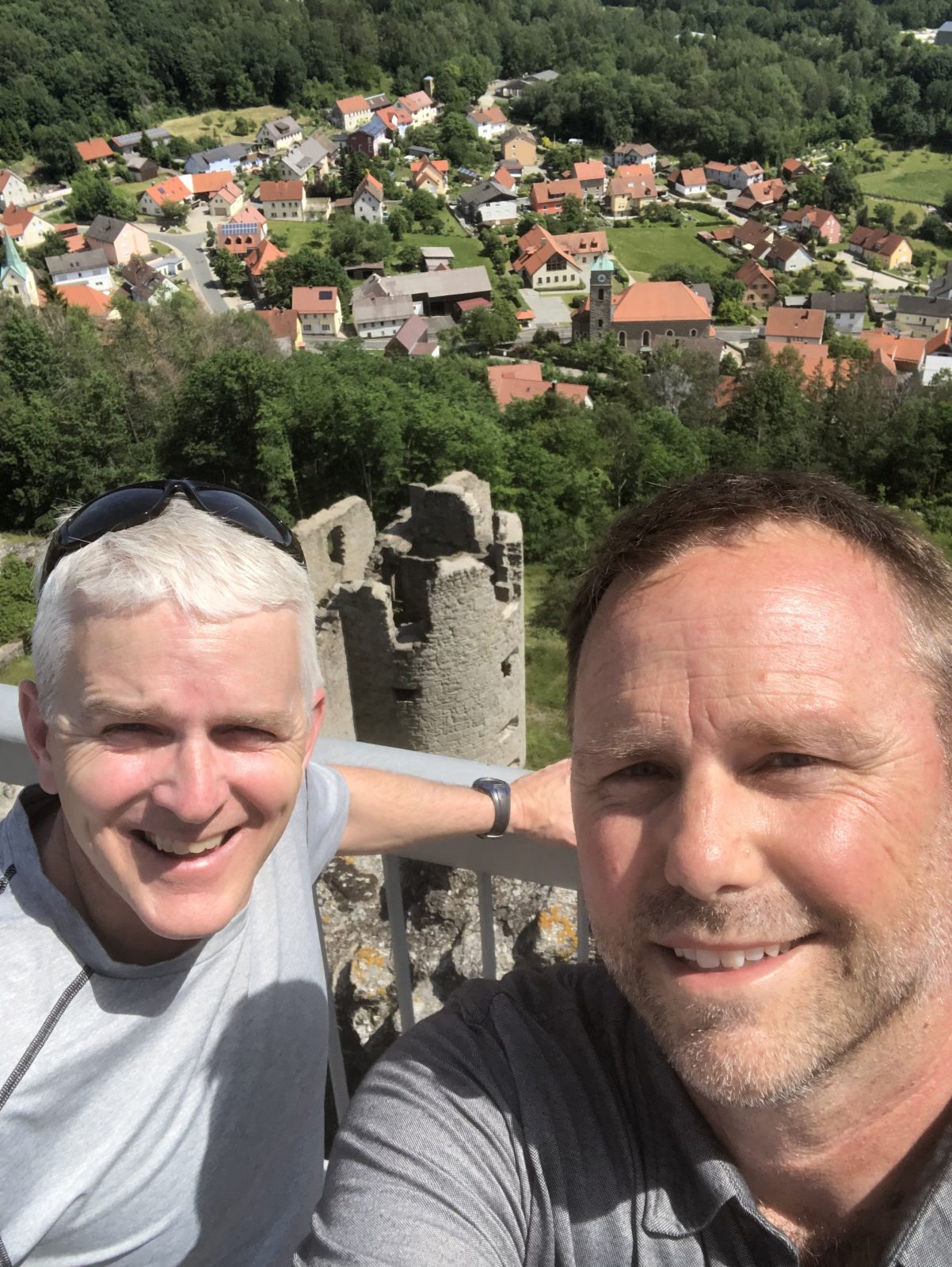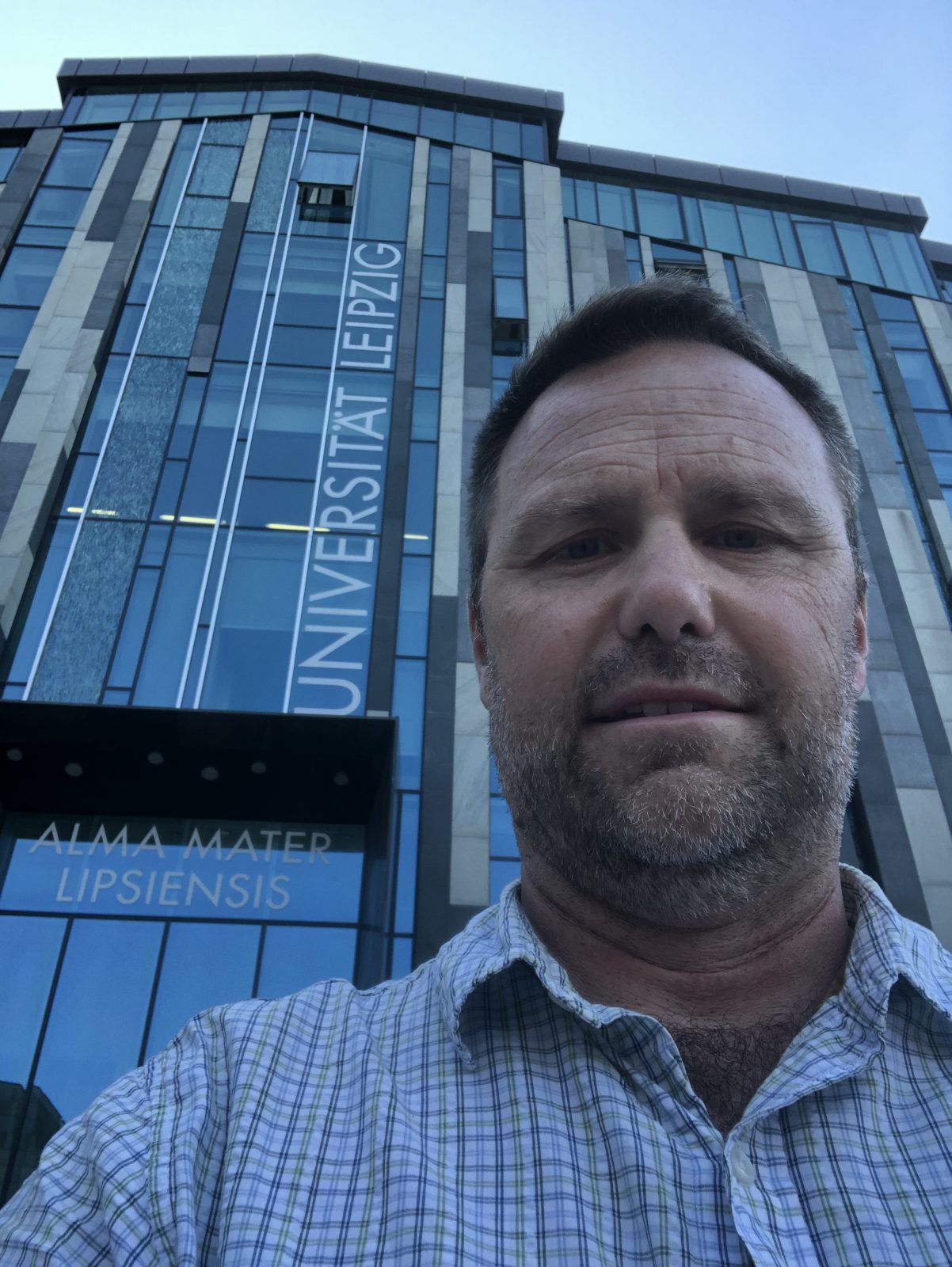Overview
This tour was, once again, a rather small group consisting of 13 students and myself. For the first time, I took a “meet-me-in-Berlin” approach, letting students find their own way to Berlin and also from Kraków back to their home. This feature worked reasonably well and will be most likely continued into the future. It allowed students to find creative ways to make the travel fit their particular circumstance. Some students used airline-ticketing agencies creatively; others were able to use family frequent flyer miles, etc. The only challenge is to make sure everyone arrives at the same airport within a reasonably short window of time. I was concerned that some students would not want to travel internationally this way, but was pleasantly surprised that no one from this group had an issue with it, even though for several it was their first time traveling overseas. We did have one student whose flight was delayed and arrived a few hours late, missing much of the first day’s events. However, overall, it worked great.
This was such a lively and wonderful group of students. They bonded quickly and the level of interest in the subject matter seemed to be about as strong as any previous group. They brought a wonderful mix of subject matter seriousness intermingled with personal maturity and playful adventure. For example, this was the first time we had a group of students venture on their own to a beach in the resort town of Potsdam and another who went and found the Botanical Garden and Botanical Museum of Berlin; both returning to the larger group with interesting stories of their adventure.
The Travel Packet
Highlights of the Tour
The format of the tour was typical of many of the former ones. We landed in Berlin, spent several days there and then made our way to Kraków for the second half of the tour. However, there were a few differences. For one thing, we did not coordinate a stop in The Netherlands. This feature must be sacrificed with the more open travel plans. Secondly, for the first time we took trains from Berlin to Kraków. The trip consisted of only one interesting exchange, when we moved from the German to the Polish train system in Poznań, Poland. We discovered the services at the train station in Poznań to be a bit thin in terms of support for non-Polish-speaking travelers, but, in the end, were able to make the right connection and without too much difficulty. Outside of that, the trip was easy to navigate. However, the trip did take most of one day, with the Polish leg consisting of a much slower train making numerous stops. Additionally, we were perhaps a bit unfortunate to find ourselves in a train car with a rather full and boisterous bevy of passengers; this definitely interfered with the hoped-for opportunity to rest and sleep. (In the future, a newly opened overnight direct line from Berlin to Kraków will need to be explored.)
If everyone can arrive in Berlin by noon of the target day, it is possible to get to the hostel with a bit of time left for a nap before a walking tour of Berlin is held; an activity designed both to educate and familiarize the students with the city but also to thoroughly tire folks out. This prepares students to hit-the-hay early in the evening (6 hours earlier than they would have in Kentucky) which, in turn, starts to take the edge off jet-lag.
After several years of bringing students to Berlin, the main stops for the walking tour have been well lined up. We start in Alexanderplatz and grab a bite to eat. I have them select an eatery of their choosing and experience interacting with the vendor on their own. For many it is a daunting request, but they come back with a sense of empowerment and a story to talk to others about. Then off we go to the Rosenstraβe Protest Memorial, then Humboldt University and Bebelplatz, swinging by Checkpoint Charlie, stopping for a bit at the Topography of Terror Museum, and then off again through Potsdamer Platz and on to the Aktion T-4 Memorial, the Memorial to the Murdered Jews of Europe, and then finally finishing up at the Brandenburg Gate.
Other events in Berlin included a tour of the Jewish Museum (above is a video of a very moving interactive exhibit at the Jewish Museum entitled, “Fallen Leaves”), a regional train ride out to Brandenburg for a tour and discussion with the folks who run the Euthanasia Memorial, another regional train out to Furstenberg to tour Ravensbrück Concentration Camp, as well as a local train ride to Oranienburg to visit Sachsenhausen Concentration Camp. There is free time most every day to do further exploring. In addition to the Potsdam beach and the Botanical Gardens, other student explorations included the Victory Column (Siegessäule) and other features found in Tiergarten, the Olympiastadion, the various venues on Museum Island, and window-shopping in various commercial areas of the city.
After we left Berlin and trained it to Kraków, we gained some familiarity with Old Town and then prepared for the hardest day, a guided tour of Auschwitz I and II. We were able to secure the services of a preferred guide, David Kennedy, who patiently and carefully walked us through the horrible history of that place. Other explorations in Kraków included the Schindler Factory Museum, and various memorials and markers of both the Jewish Ghetto and the Płaszów Concentration Camp. We also enjoyed the Wawel Castle, the Wawel Cathedral, a tour of Old Town and the old Jewish quarter, as well as Cloth Hall and the festive town center.
Early on a Tuesday morning we were taxied to the Pope John Paul II airport, about 30 minutes outside of the city, and folks left on different flights throughout the morning and early afternoon. (Due to a scheduling oversight, one student did need to take a midnight train back to Berlin to catch a flight home out of Berlin, Tegel Airport – thankfully; she was able to venture back without incident and successfully caught her flight.)
After this tour, however, I stayed in Europe for another 6 days. My college roommate, a high school history teacher in Michigan, was meeting me in Munich. We were set to explore several other sites in Germany that may merit inclusion into future trips. These will be mentioned in the Personal Highlights part of this travelogue.
Personal Highlights
In terms of personal highlights, several moments will stand out in memory. For instance, this is the tour when I found the rather subtle marker indicating the location of the Fuhrer’s bunker (just a couple blocks south of the Brandenburg gate). In addition, on this tour the director of the museum at Ravensbrück, Sabine Arden, allowed our team to go behind the fences to a soon-to-be opened area of the memorial. In this area, Dr. Arden believes, Corrie and Betsy Ten Boom were likely housed for most of their time at the camp. To be granted this sort of access left us all feeling special; we realized we were being treated to something very unusual.
The additional week, spent with my good friend Steve, afforded us the opportunity to visit three other holocaust sites; both Dachau (outside of Munich) and Flossenbürg concentration camps (the camp where Bonhoeffer was last held and then executed) as well as the Bernburg Euthanasia Center, the facility that took over the Aktion T-4 killings when Brandenburg was shut down due to local public pressure. We also stumbled across a “Chair Memorial” in Leipzig marking the former location of the local Synagogue, before all of the Jews were expelled. Additionally, we toured the building that housed the Nuremberg trials, spent part of a day in Wittenberg, and happened upon a very unusual celebration of Bach in Leipzig entitled “Bach Driving Crazy” (see video to the right). The performers mixed expert musicianship with the public destruction of a hatchback. (The German sense of humor can be, well, somewhat difficult to describe.) To have the opportunity of spending an extra week of exploring and sightseeing with my partner-in-crime from college days was such a privilege. I’m not sure it gets much better than that.
Future Tours
For more information about future academic tours, check out this website: https://www.asbury.edu/academics/cce/travel-courses/germany-poland/
Other Photos from the Tour

Picking up at Tegel Airport, Berlin 
Brandenburg, from the City Church Bell Tower 
Caught Mid-Air 
On the way to Furstenberg 
Tiergarten, from the top of Siegessäule 
Celebrating a Birthday, Berlin 
Family Names, Auschwitz, I 
Arch, Kraków 
St. Paul’s at Night, Munich 
Flossenbürg Arch, Castle Ruins, circa 948 
View of Flossenbürg from Castle Ruins 
Where Modern Psychology began, Universität Leipzig
